The smell of fresh paint and the sight of crisp columns can transform how a home feels before guests even reach the door. A colonial front porch channels history’s sense of order — straight lines, balanced forms, and enduring materials — while still leaving plenty of room for personal expression. Whether your house is an 18th-century gem or a 2025 build nodding to tradition, the 25 ideas below layer classic character with practical comfort. From lantern-lit walkways to lattice skirts that keep critters out, each suggestion sits comfortably between tried-and-true craftsmanship and modern convenience. Use one concept as a weekend upgrade or weave several together for a wholesale curb-appeal reboot that feels timeless the instant you step onto the porch.
1. Symmetrical Columned Entry Establishes Instant Order
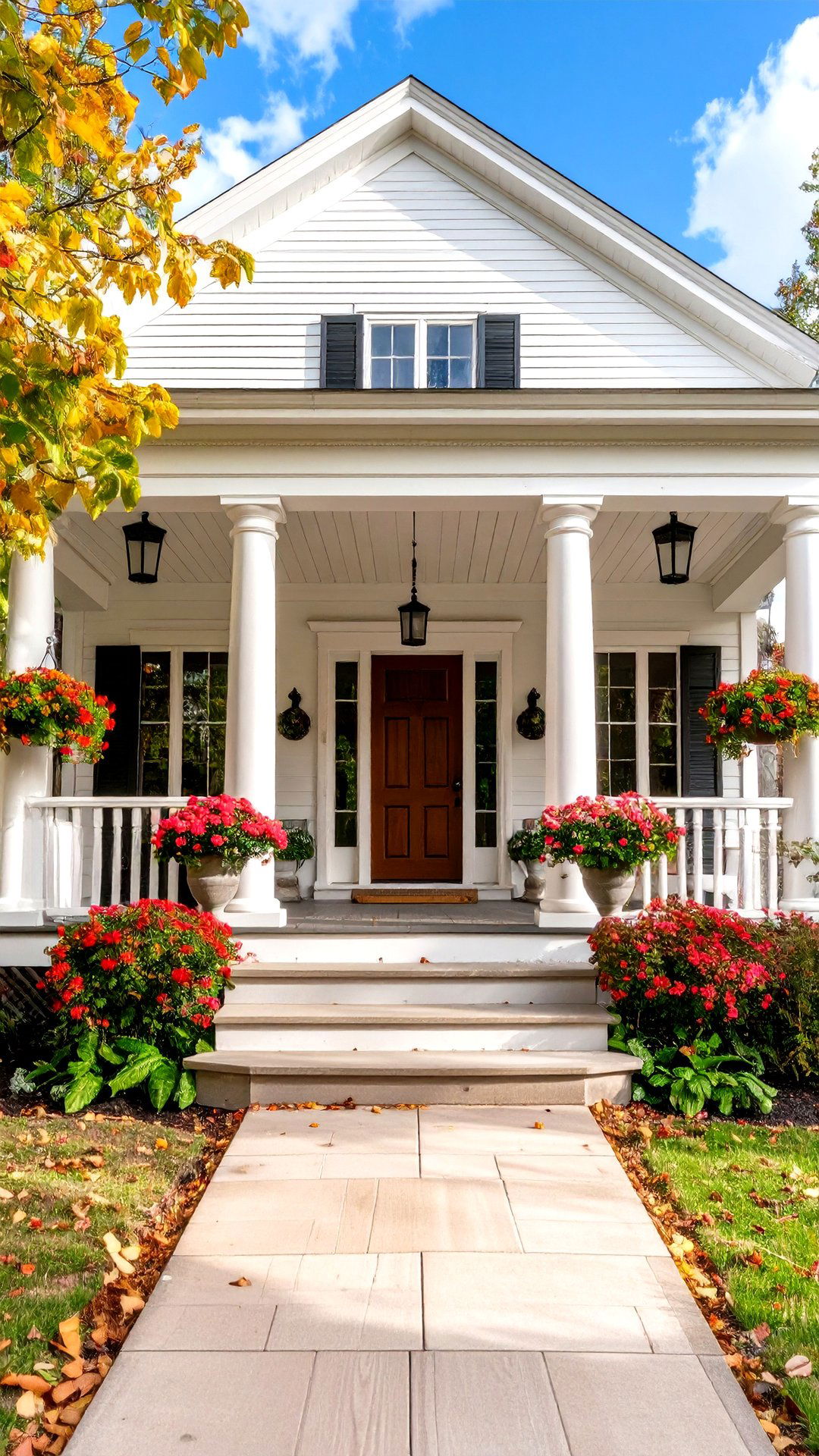
A balanced façade with matching pairs of square or round columns frames a colonial front porch like bookends in a library, signaling grace and strength the moment someone drives up. Symmetry calms the eye and makes later décor decisions — furniture placement, planters, even holiday garlands — almost fool-proof. Architectural references note that classical revival porches rely on columns to uphold the style’s “temple-front” dignity, keeping rooflines clean and centered.
2. Copper Lantern Sconces Add Warm Historic Glow
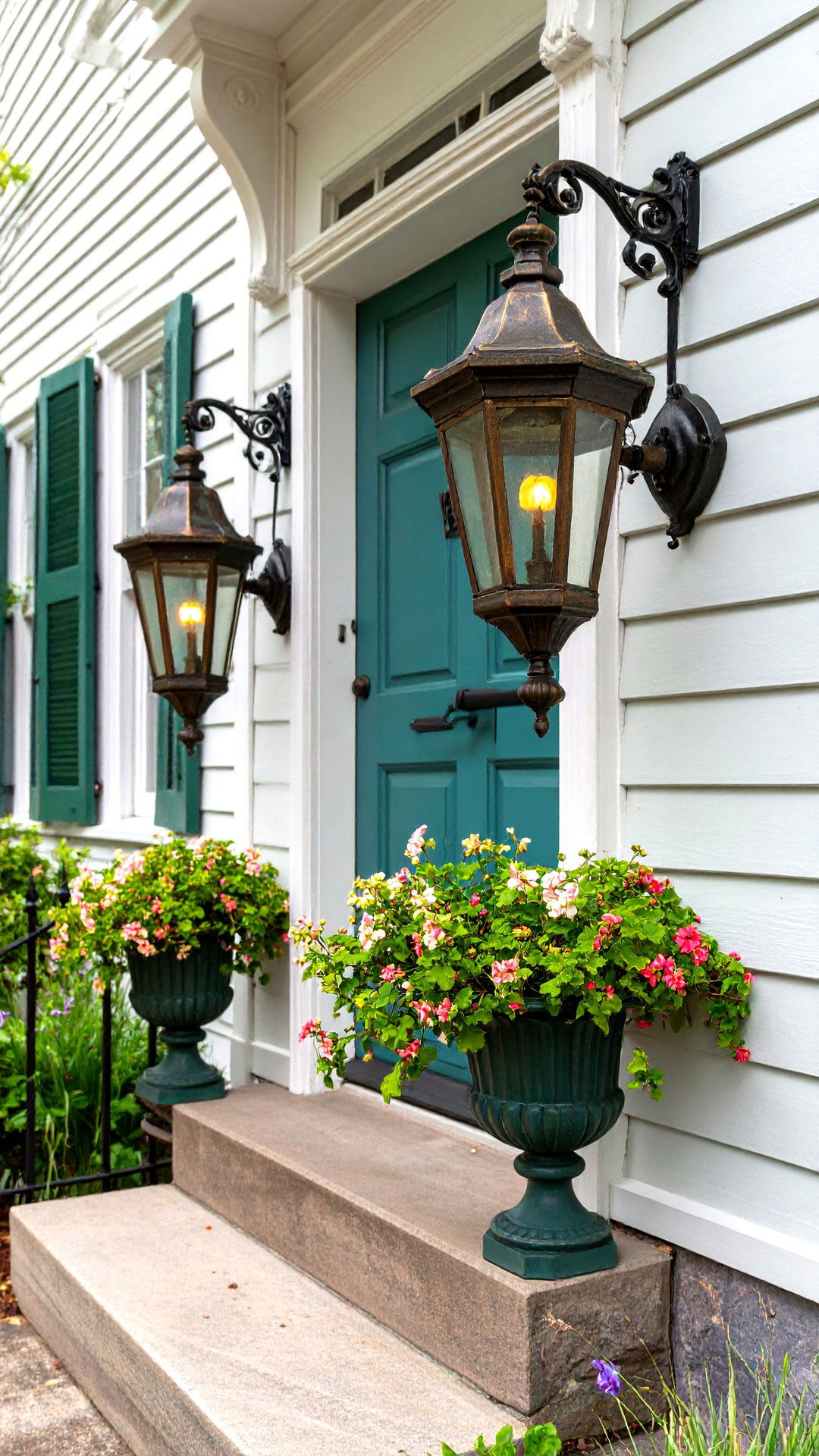
Nothing says “welcome home” like the flicker of a lantern flanking a doorway. Traditional colonial copper fixtures age into a soft verdigris, echoing church steeples and courthouse domes seen across early American towns. Period-inspired lights typically feature tapered frames, clear glass, and finial tops — details that complement paneled doors and clapboard siding without feeling fussy.
3. Haint-Blue Ceilings Chase Spirits (and Wasps) Away
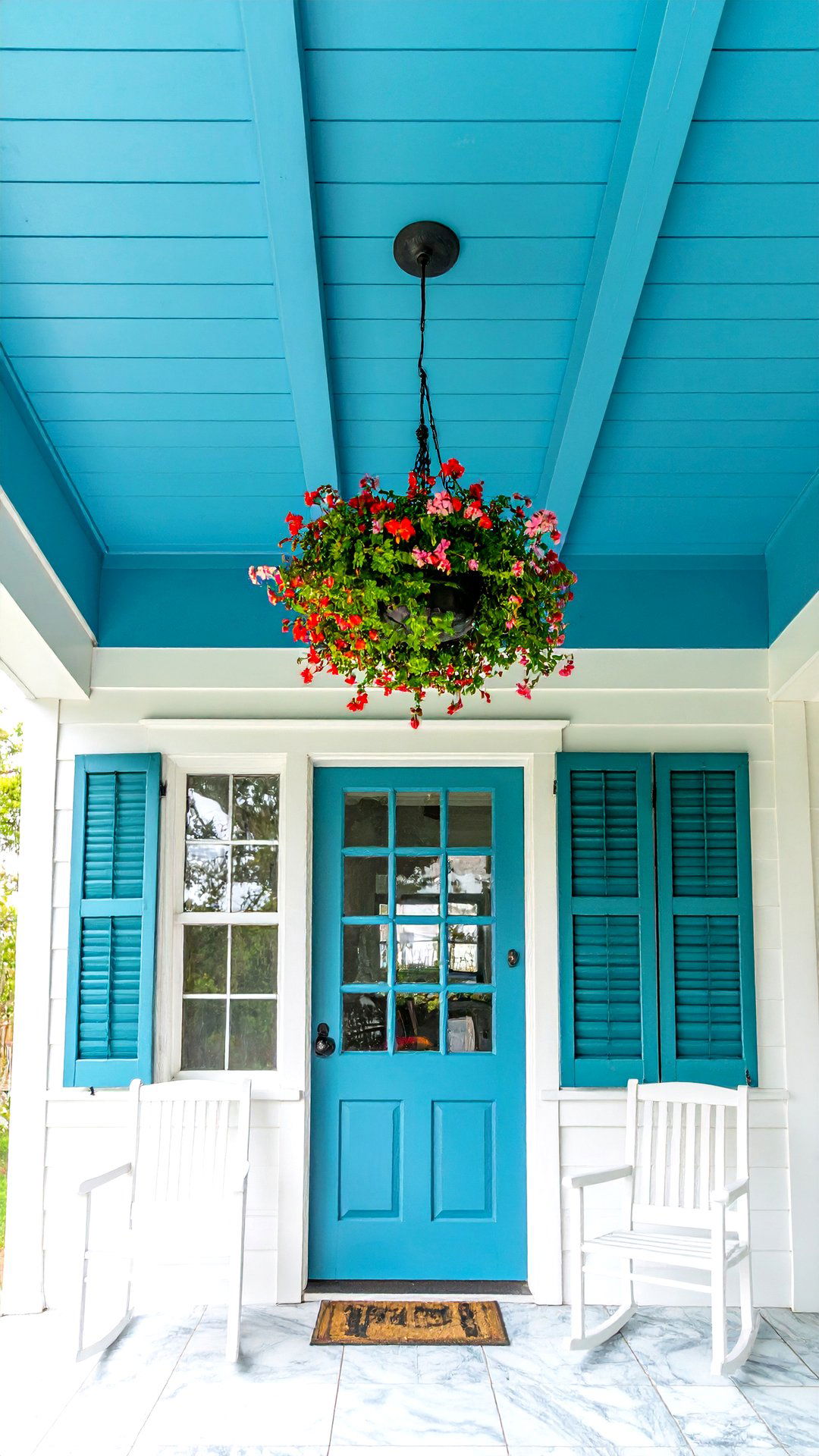
Painting the porch ceiling a watery sky-blue is more than folklore; Gullah Geechee communities embraced the hue to deter restless “haints, ” and modern homeowners swear the color confuses nesting insects. Updated color guides list graceful options like Benjamin Moore Palladian Blue or Sherwin-Williams Rainwashed, satisfying superstition and style in one smooth sweep.
4. Brick Stoops With White Risers Ground the Entrance
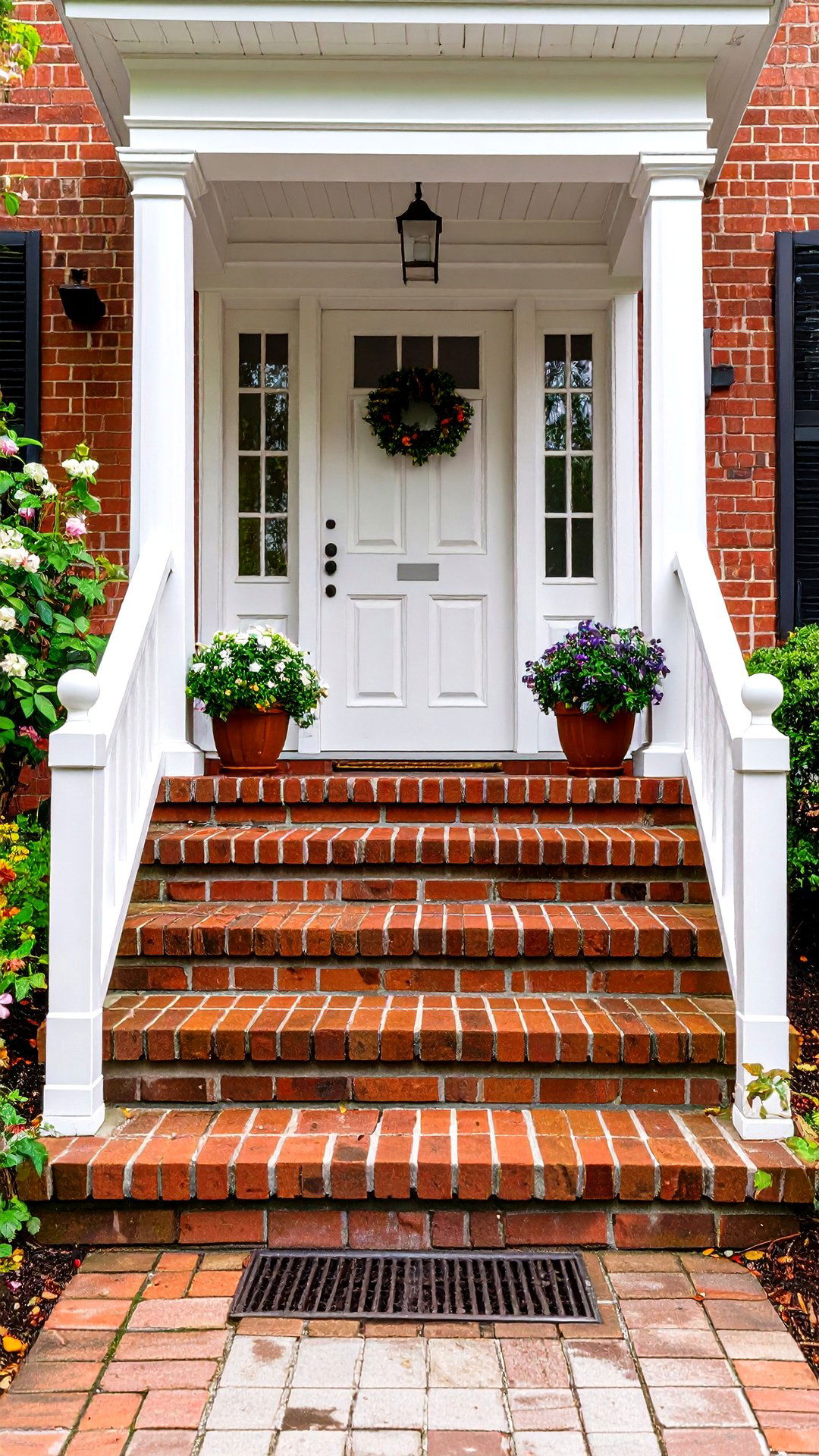
A low brick stoop — two or three deep treads capped with fresh white risers — connects the colonial front porch to garden paths while hiding scuffs better than painted wood. Brick’s durability lets you layer seasonal containers or wrought-iron boot scrapers without fear of dents, and design editors highlight simple tricks such as staining or covering existing steps to renew curb appeal fast.
5. Wicker Rocking Chairs Invite Long Conversations
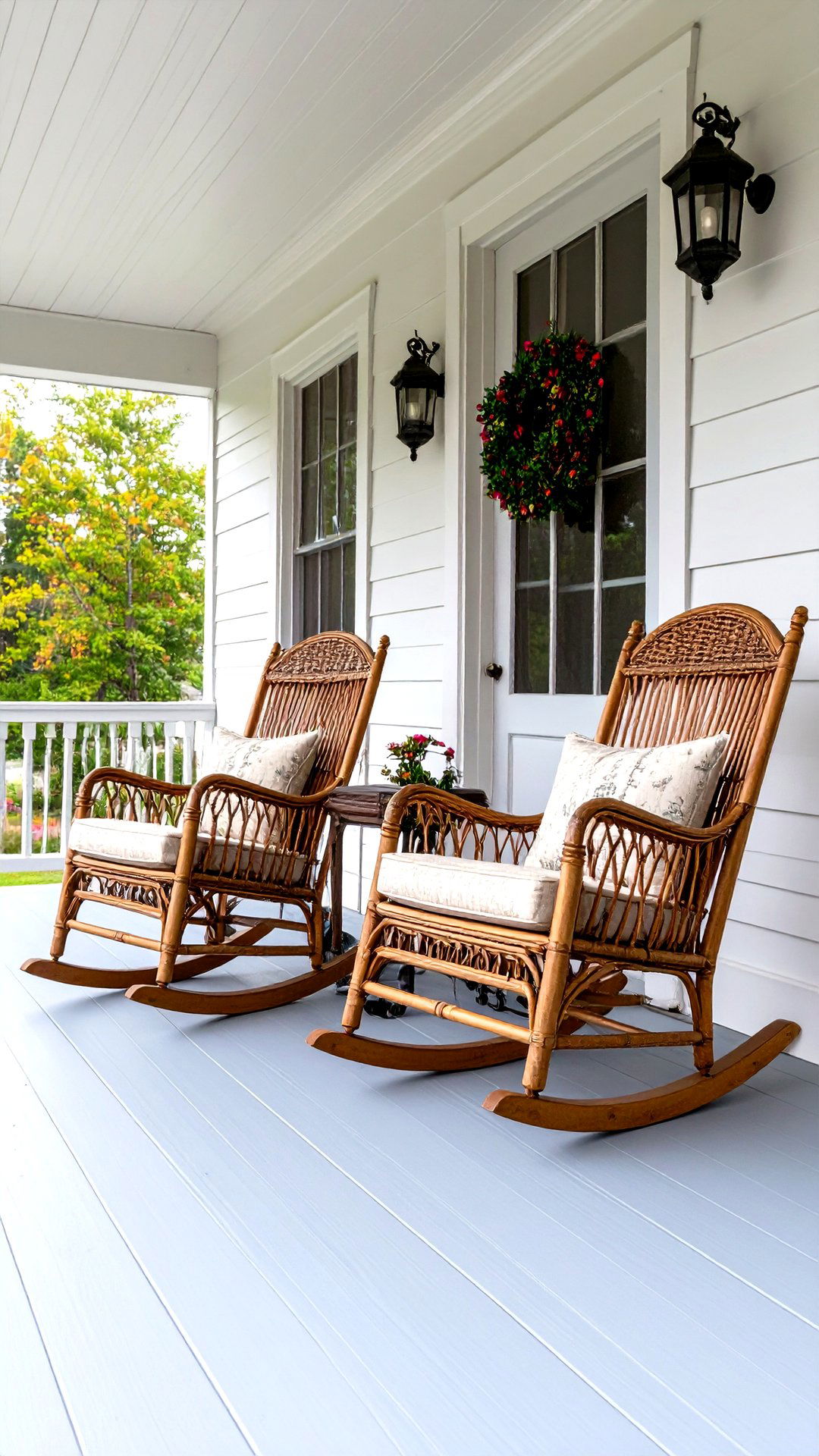
Place a pair of high-back rocking chairs made of weather-resistant wicker on either side of the door and you’ve created a living postcard of porch life. Outdoor product testers praise all-weather resin-wicker frames for shrugging off rain and UV rays while retaining that familiar woven texture guests instinctively gravitate toward.
6. Classic Shutters Frame Windows With Purpose
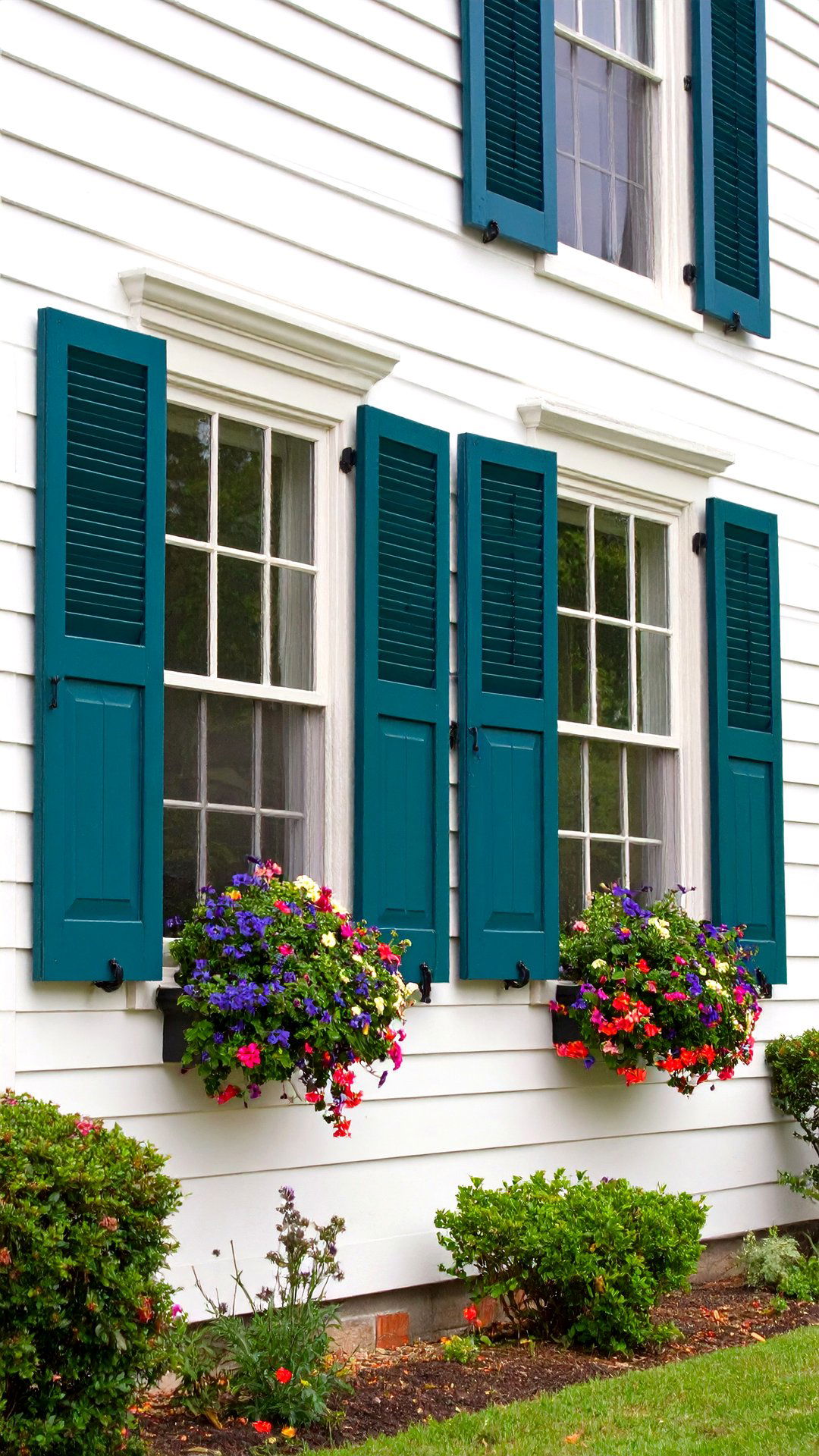
Well-sized shutters — wide enough to cover the sash if they really swung closed — act like architectural “eyebrows, ” adding depth and proportion. Designers insist the look is timeless, whether you install louvered panels in deep forest green or paint solid board-and-batten styles a bold navy to punch up white clapboards.
7. Williamsburg-Inspired Paint Palette Honors Heritage

Historic museums partnered with paint makers to recreate 144 authentic Colonial Williamsburg colors, from creamy Harwood Putty to dignified Carter Red. Sampling these toned-down tints on doors, railings, or porch floors keeps renovation choices rooted in research rather than guesswork, and ensures any new shade “belongs” beside aged brick or stone.
8. White Balustrade Rails Define the Edge Gracefully
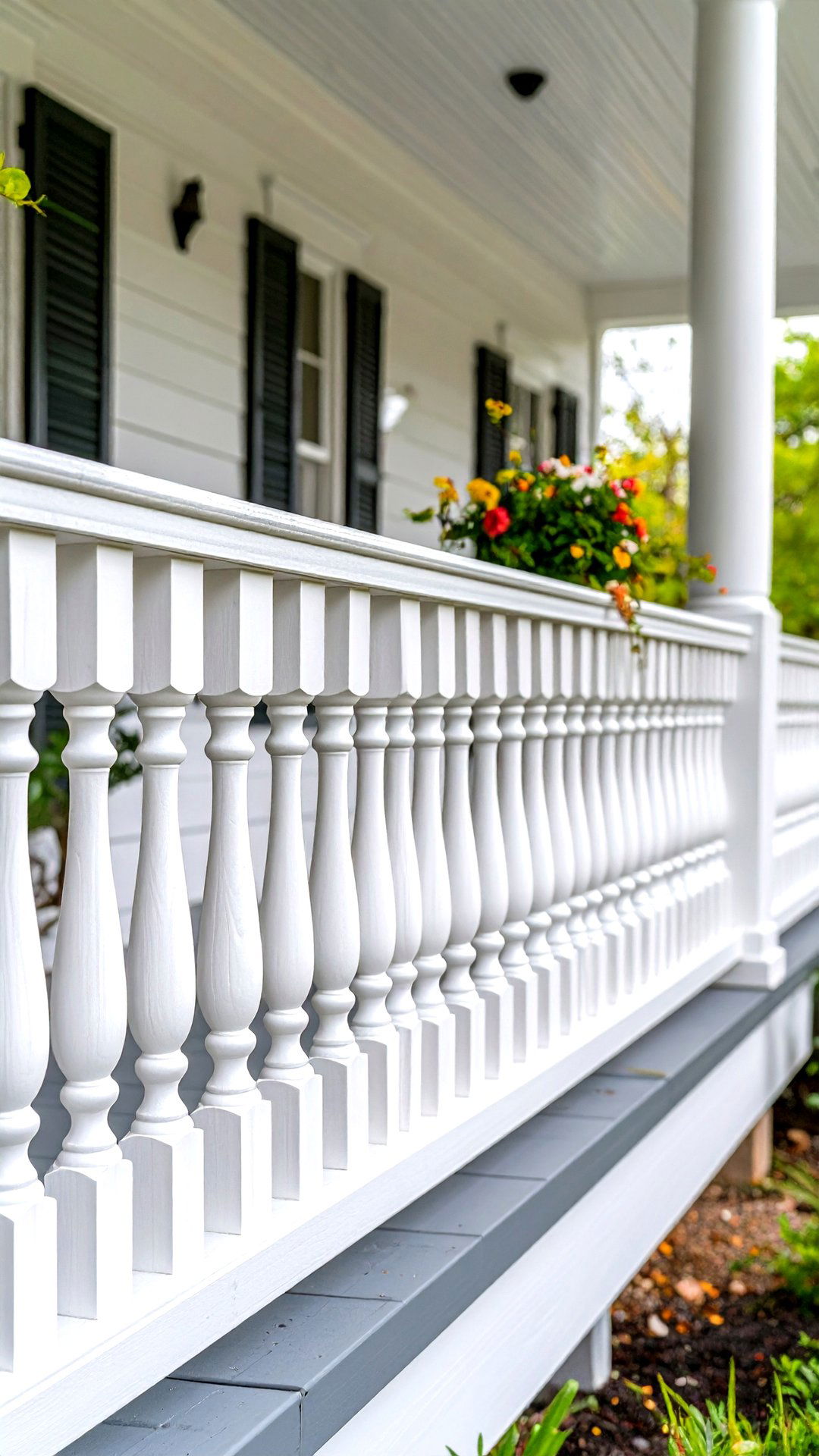
Turned wood balusters about four to five inches in diameter capped by a stout top rail were hallmarks of high-style colonial revival porches. Their rhythm creates a genteel boundary without blocking breezes, and reproduction mills still sell profiles copied straight from 19th-century catalogs.
9. Boxwood Topiary Planters Supply Year-Round Green

Low-growing boxwoods trimmed into neat spheres or cones give a colonial front porch four-season structure. Landscaping guides hail evergreen shrubs for lasting color and minimal maintenance; just two urns flanking the steps can soften rigid lines while staying verdant when annual blooms fade.
10. Beadboard Ceilings Lend Subtle Texture Overhead
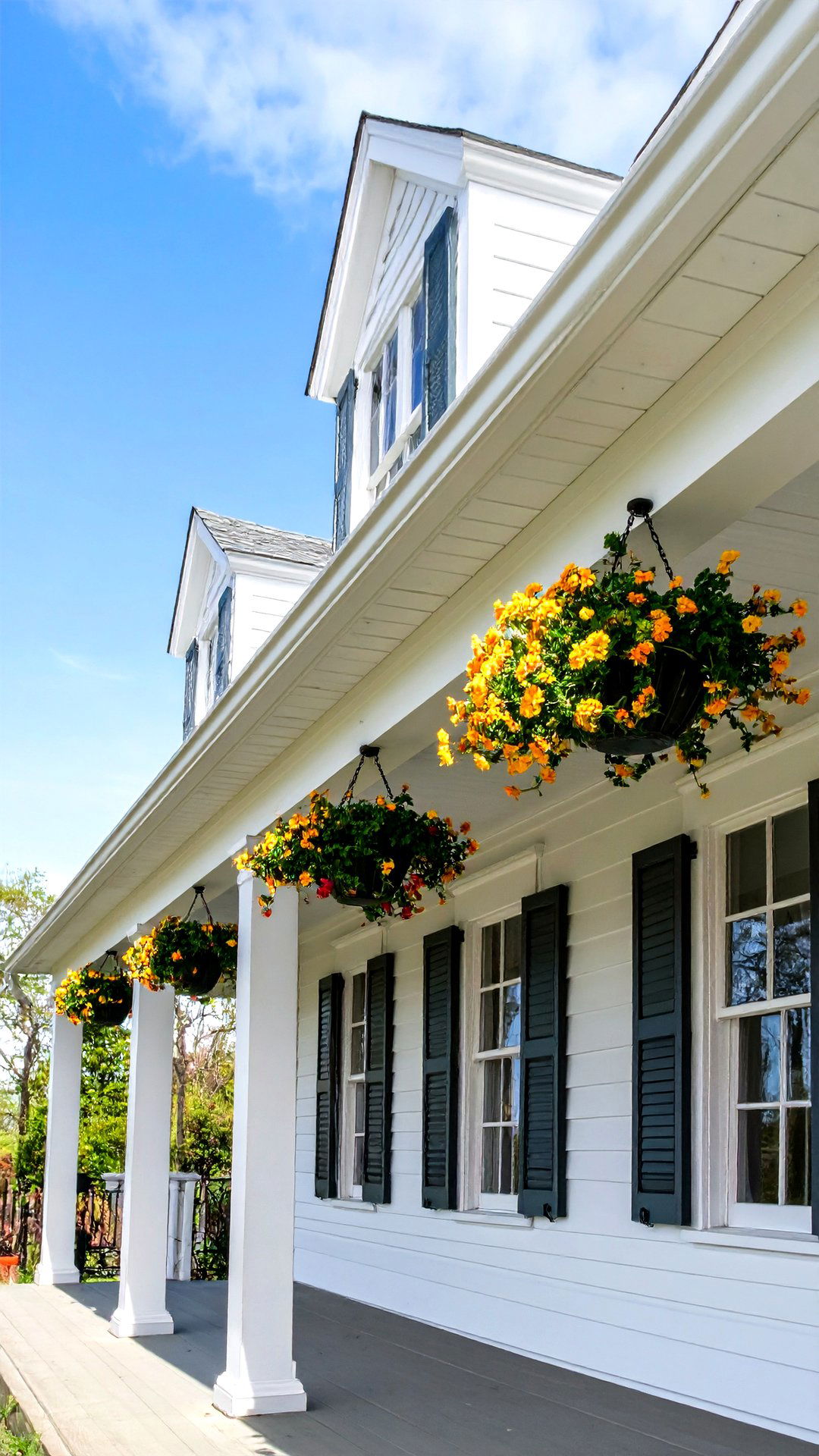
Installing narrow-strip beadboard across the ceiling introduces a delicate shadow line that feels both cottage-cozy and era-appropriate. Decor writers note that even a simple coat of crisp white or pale gray on beadboard draws eyes upward and hides hairline cracks better than flat drywall.
11. Copper Gutters and Round Downspouts Elevate Details
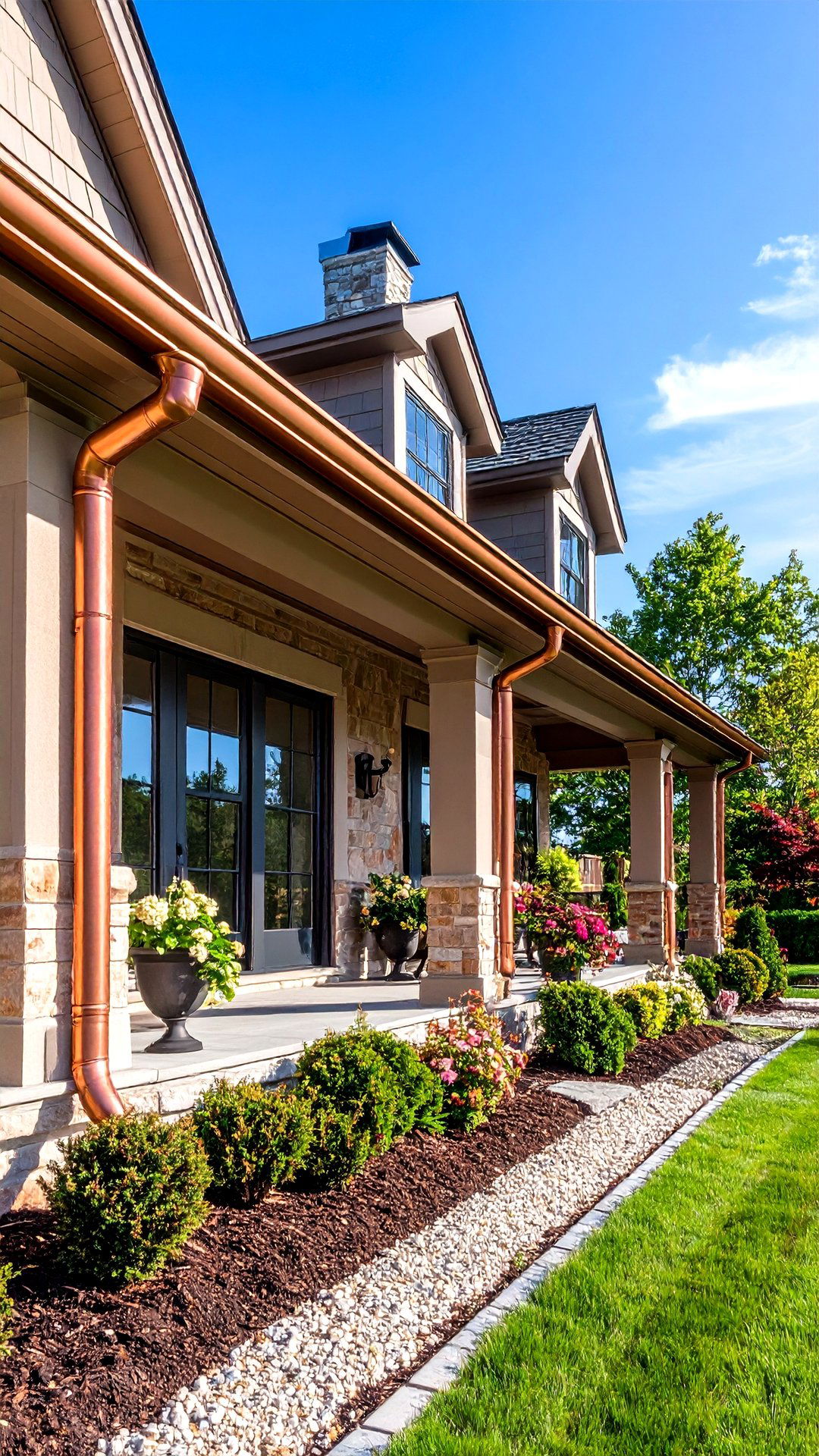
Functional upgrades can be beautiful: copper half-round gutters resist rust for six decades or more and develop that sought-after patina colonial enthusiasts adore. Material guides list copper among the most durable options, emphasizing its longevity and classic shine — an investment that instantly hints at craftsmanship.
12. Pedimented Door Surround Makes the Entrance a Star
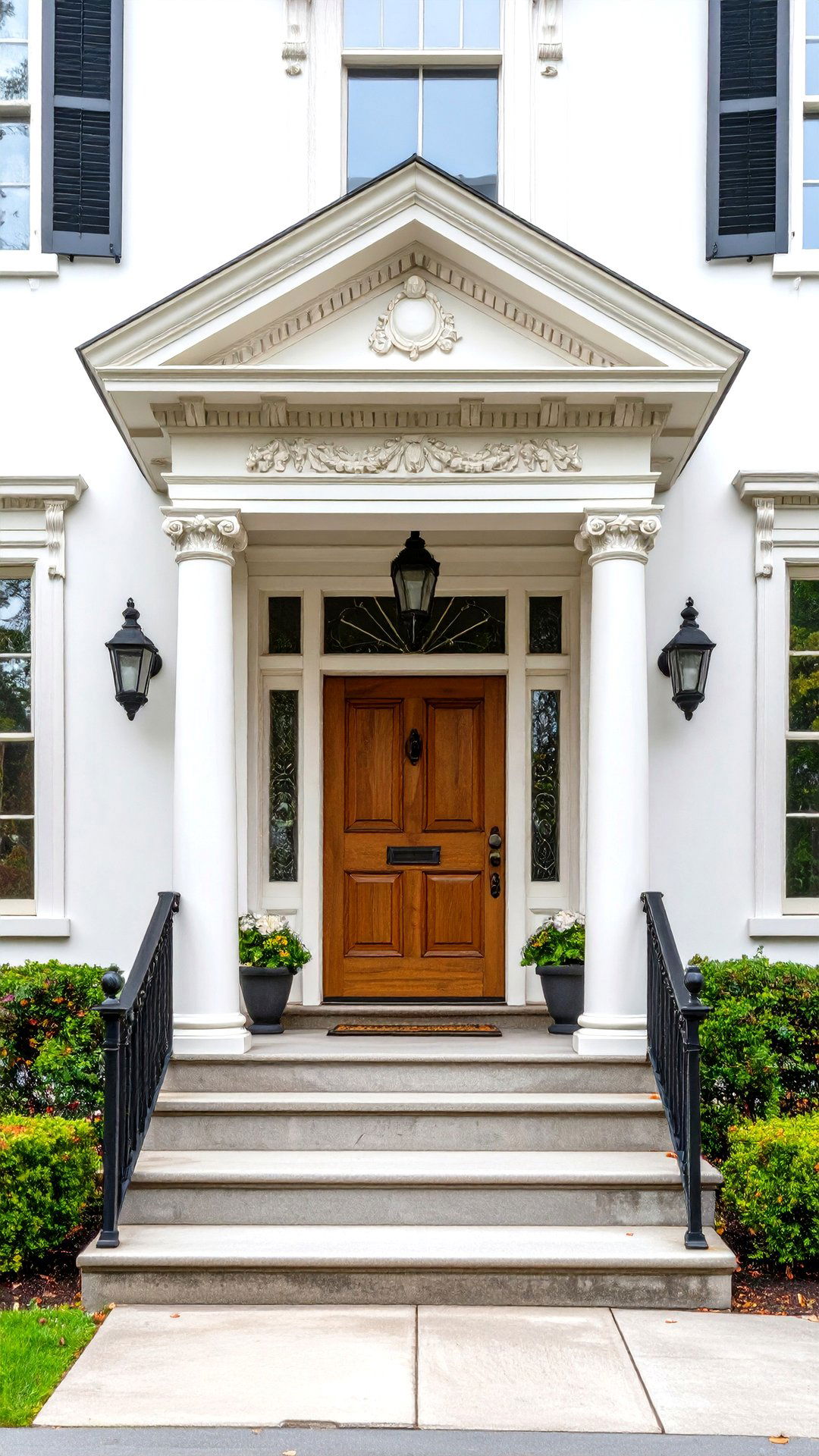
A simple door becomes stately when crowned with a triangular pediment supported by slim pilasters. Colonial revival moulding resources describe this portico treatment as a defining characteristic, often paired with sidelights or a fan-light transom to usher daylight into the foyer.
13. Pathway Post Lanterns Guide Guests After Dark
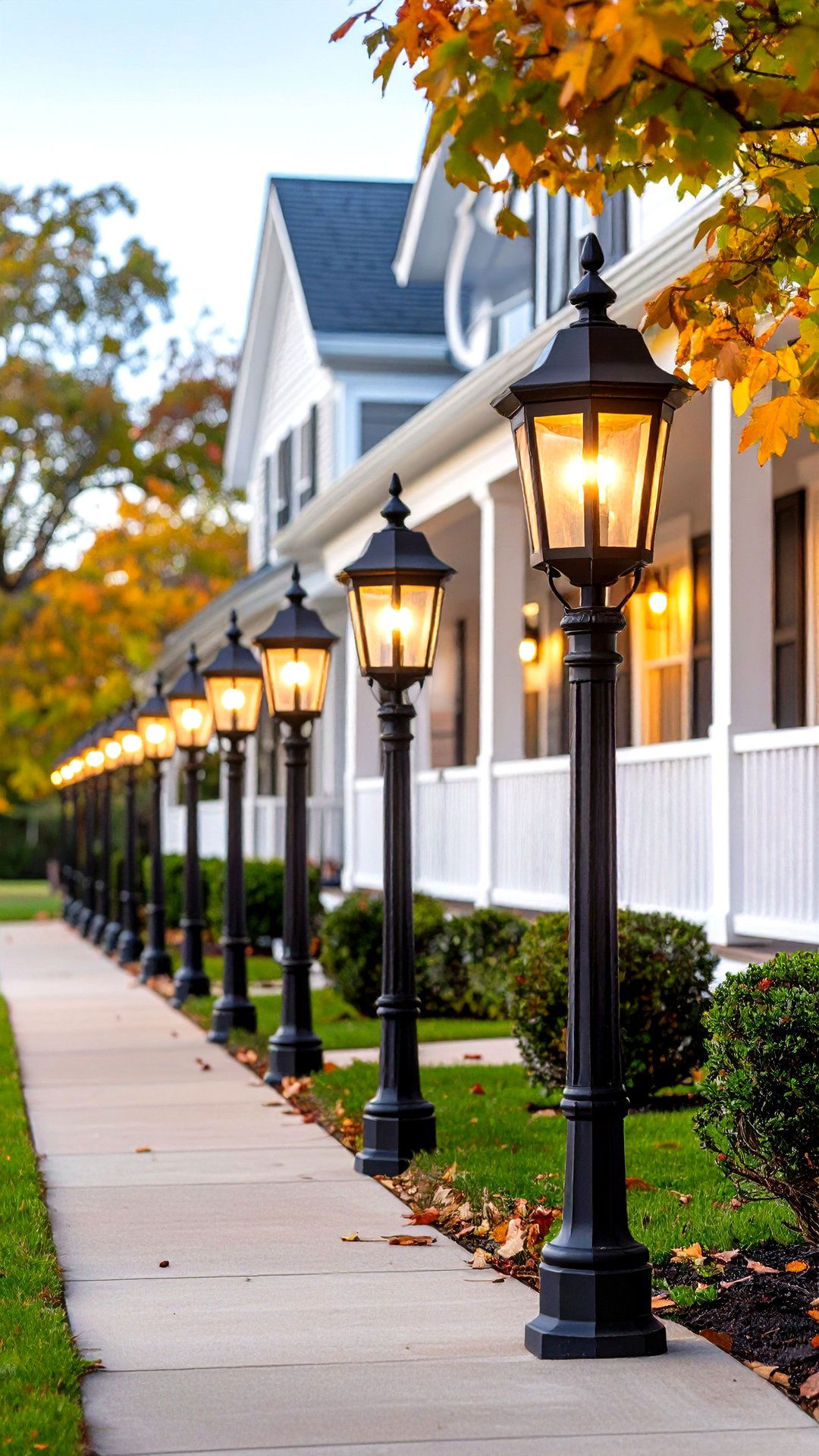
Designers warn that flimsy solar stakes can cheapen an approach; instead, sturdy wired lantern posts spaced along the walk mirror the metalwork of porch sconces and provide dependable illumination. The right scale and finish elevate the perceived value of the entire frontage.
14. Hanging Porch Swing Encourages Afternoon Naps
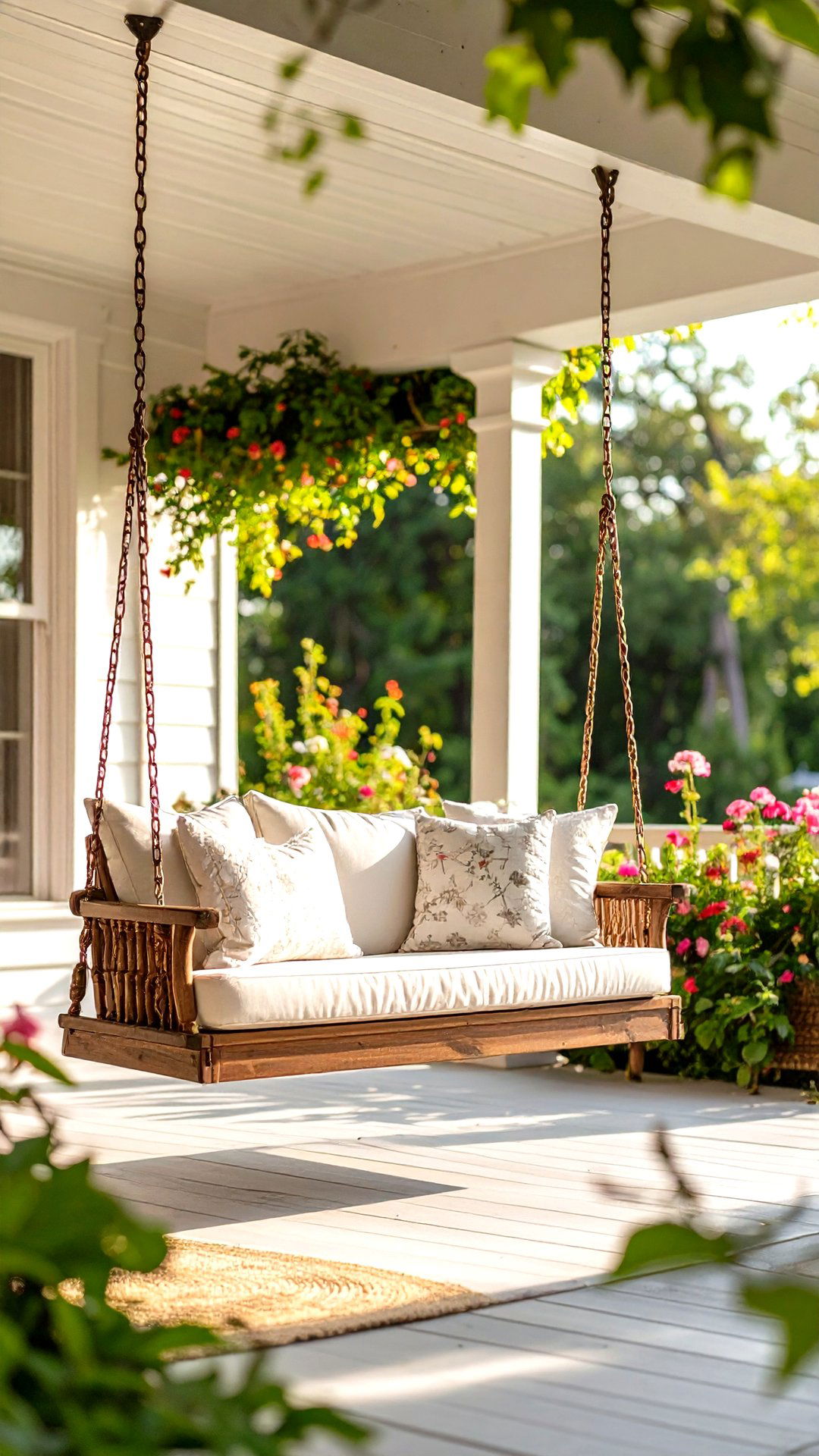
Few upgrades match the charm-to-cost ratio of a suspended wooden or wicker swing piled with pillows. Style editors call a swing the quickest way to add “luxe comfort” to a colonial front porch while doubling seating without cluttering the floor.
15. Lattice Skirt Keeps Critters Out, Airflow In
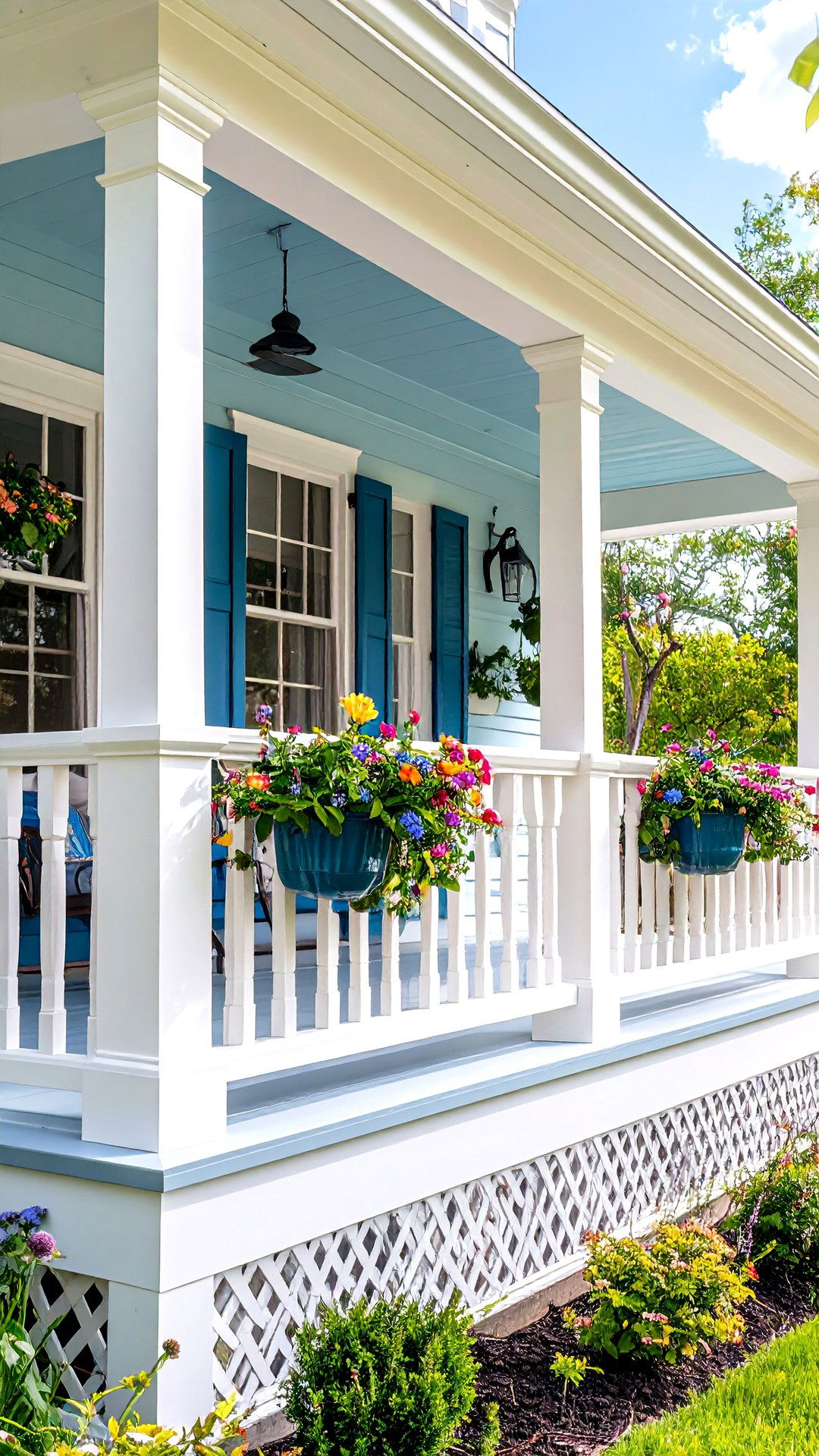
Covering the gap beneath the porch with square-pattern lattice hides shadows, deters animals, and — crucially — allows moisture to escape. Deck-building tutorials stress venting to prevent wood rot, recommending gaps or perforated panels so the structure lasts as long as the house.
16. Herringbone Brick Walkway Leads the Eye Home

Laying bricks in a herringbone or running-bond pattern from the sidewalk to the steps ties the landscape to traditional masonry on many colonial porches. Masonry guides explain how patterned paths resist shifting and lend textural richness that poured concrete can’t match.
17. Window-Box Plantings Bridge House and Garden
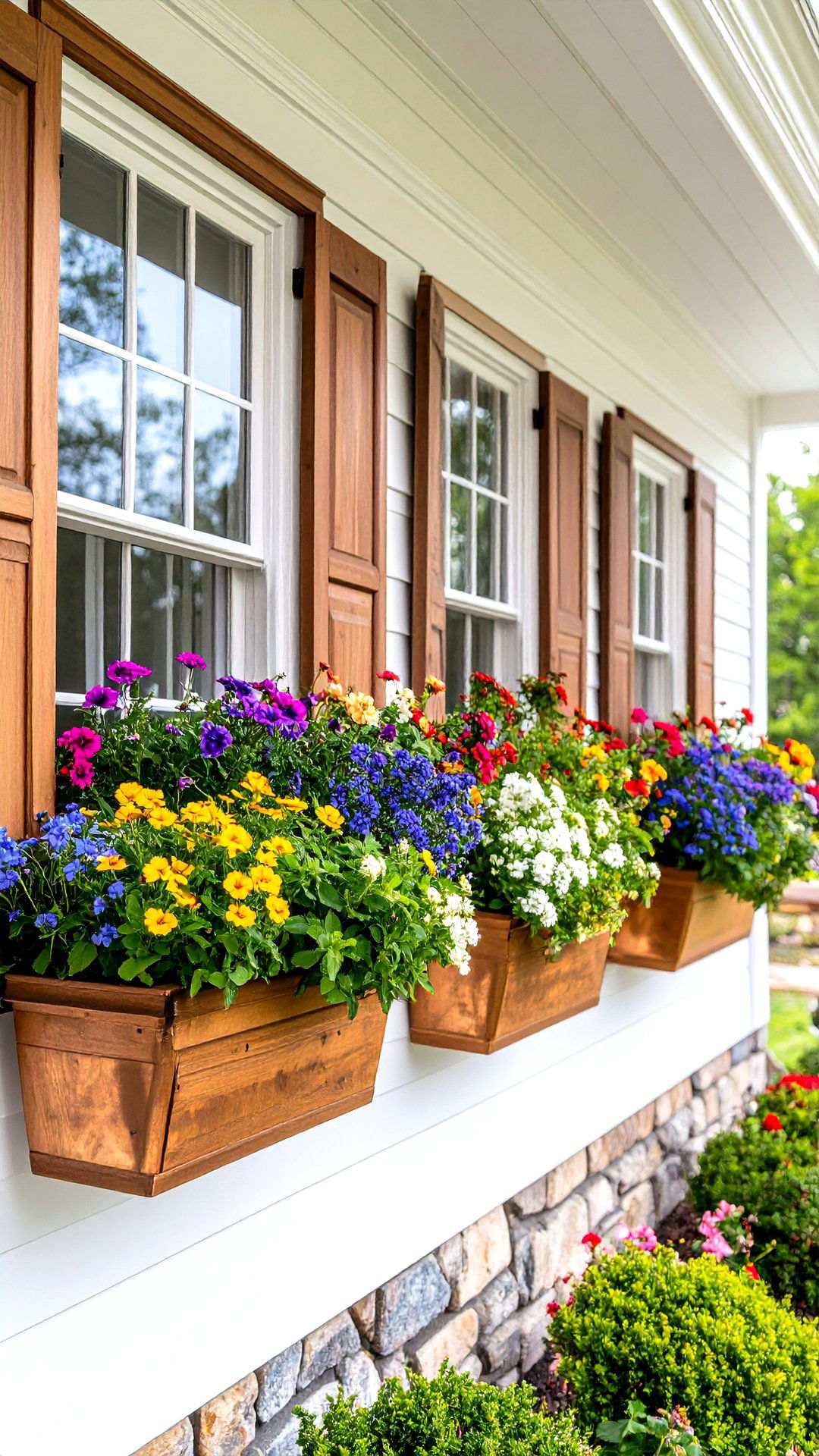
Mount cedar or copper window boxes under front-facing windows and repeat those plant colors in porch urns. Container-garden round-ups highlight how coordinated blooms create a memorable first impression and let homeowners refresh the display seasonally with minimal effort.
18. Reclaimed Wood Flooring Adds Story-Rich Character
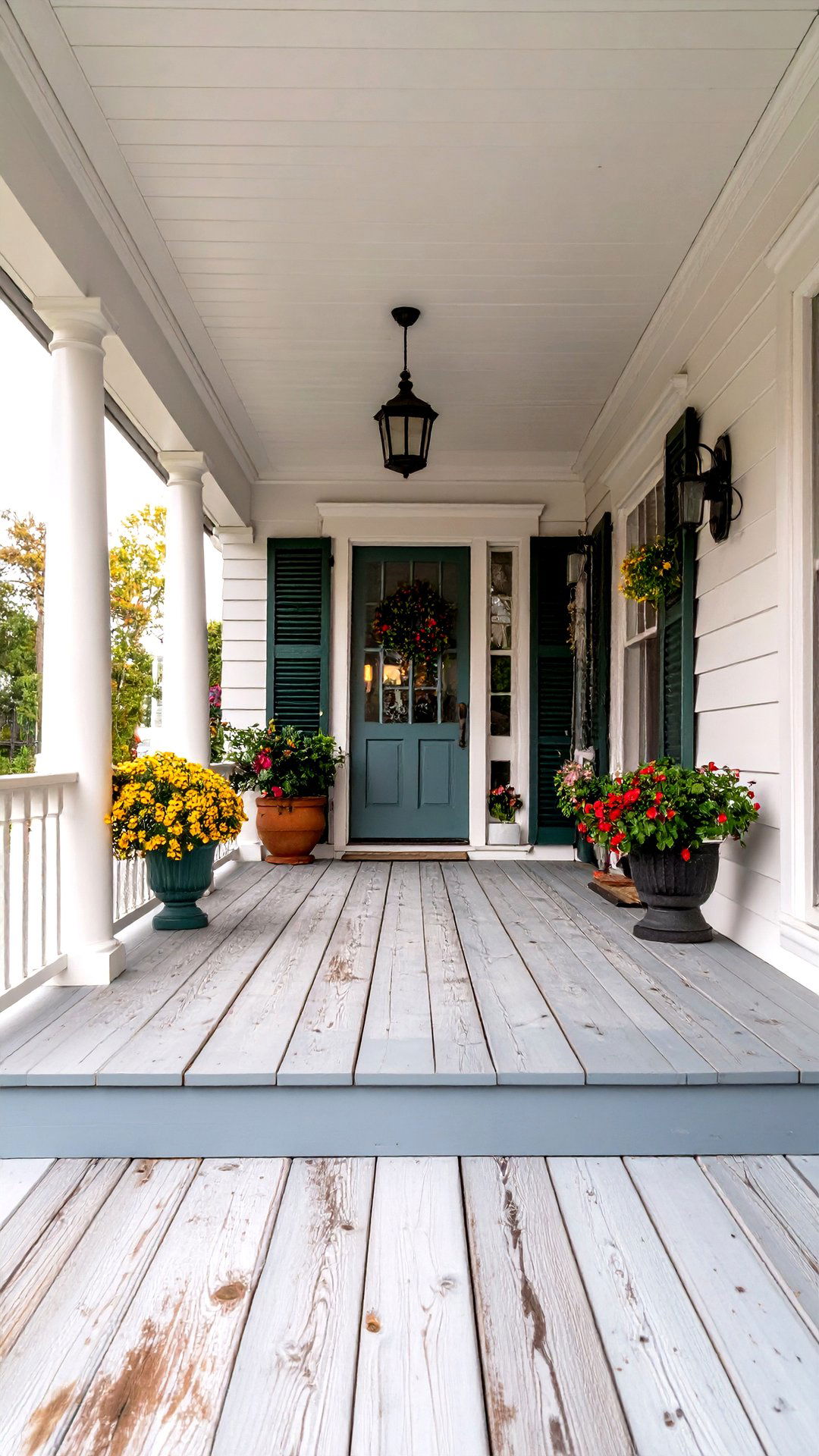
Designers love mixing new paint with old boards — especially wide, heart-pine planks whose saw marks whisper of earlier centuries. Outdoor-room trend pieces list rustic reclaimed wood among the easiest ways to add warmth and texture to covered porches while staying on-theme historically.
19. Crown-and-Dentil Trim Finishes the Ceiling Line
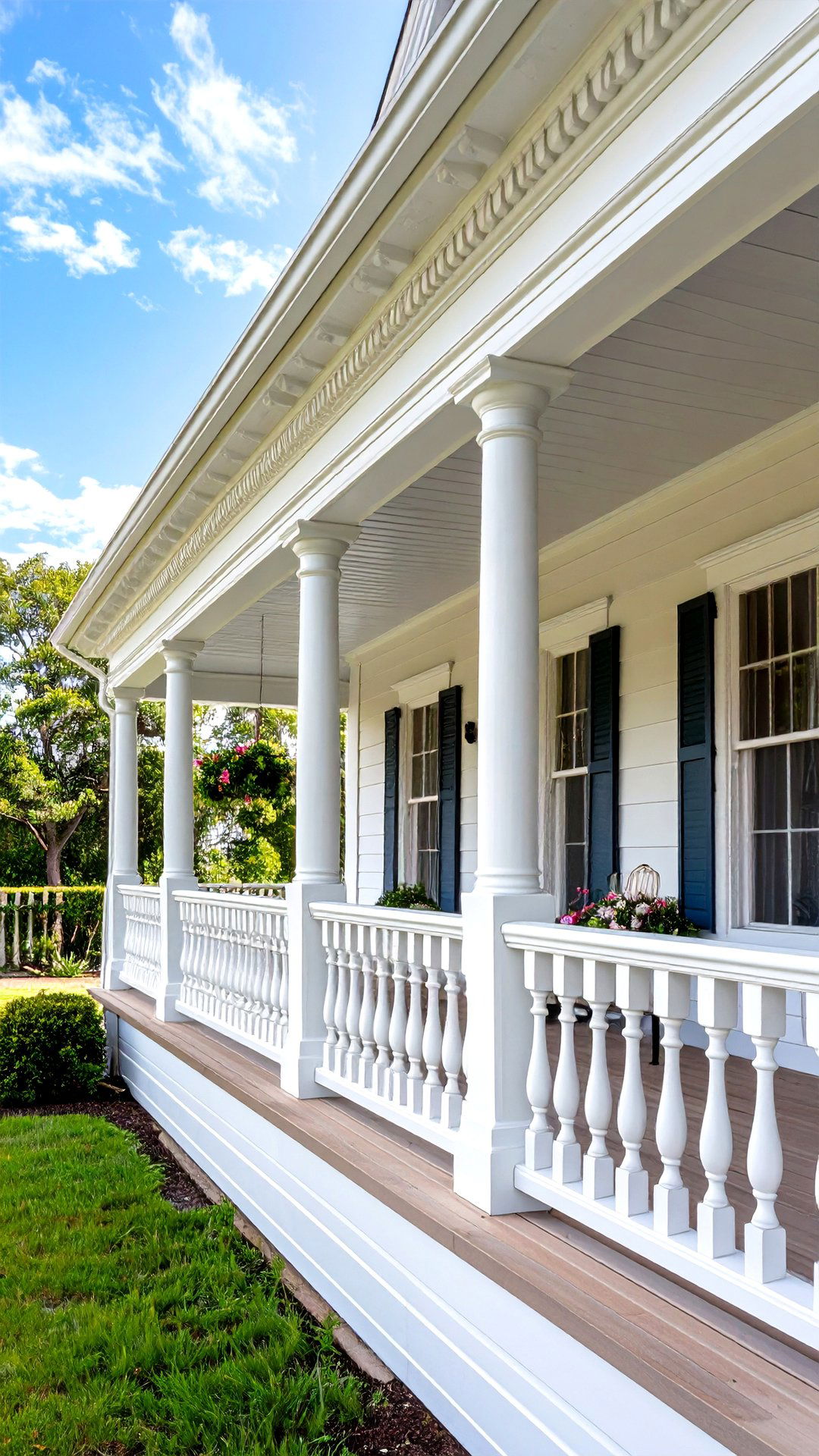
Installing a modest crown moulding, or even tiny dentils under the eaves, frames a colonial front porch much like a picture mat accents artwork. Architectural style sheets identify ogee and bead-and-quirk profiles as faithful colonial choices that hide seam lines where walls meet roof.
20. Built-In Hooks Welcome Seasonal Wreath Swaps
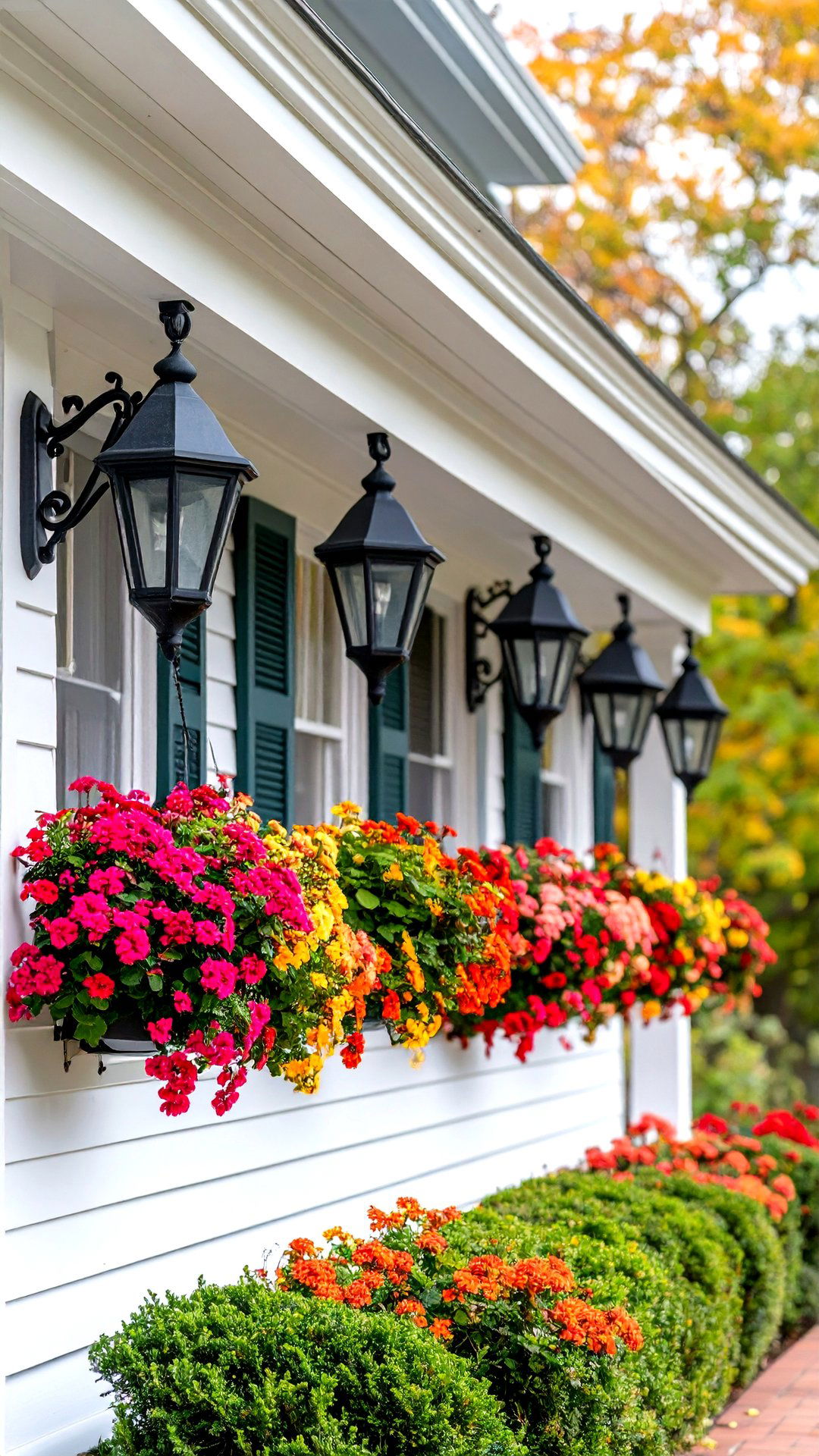
Permanent metal hooks centered on the pediment or flanking lights make hanging pine garlands in December — or fern baskets in June — effortless. Seasonal décor guides remind homeowners that quick-change displays keep porches feeling fresh without adding permanent clutter.
21. Matching Rockers Reinforce the Porch’s Symmetry
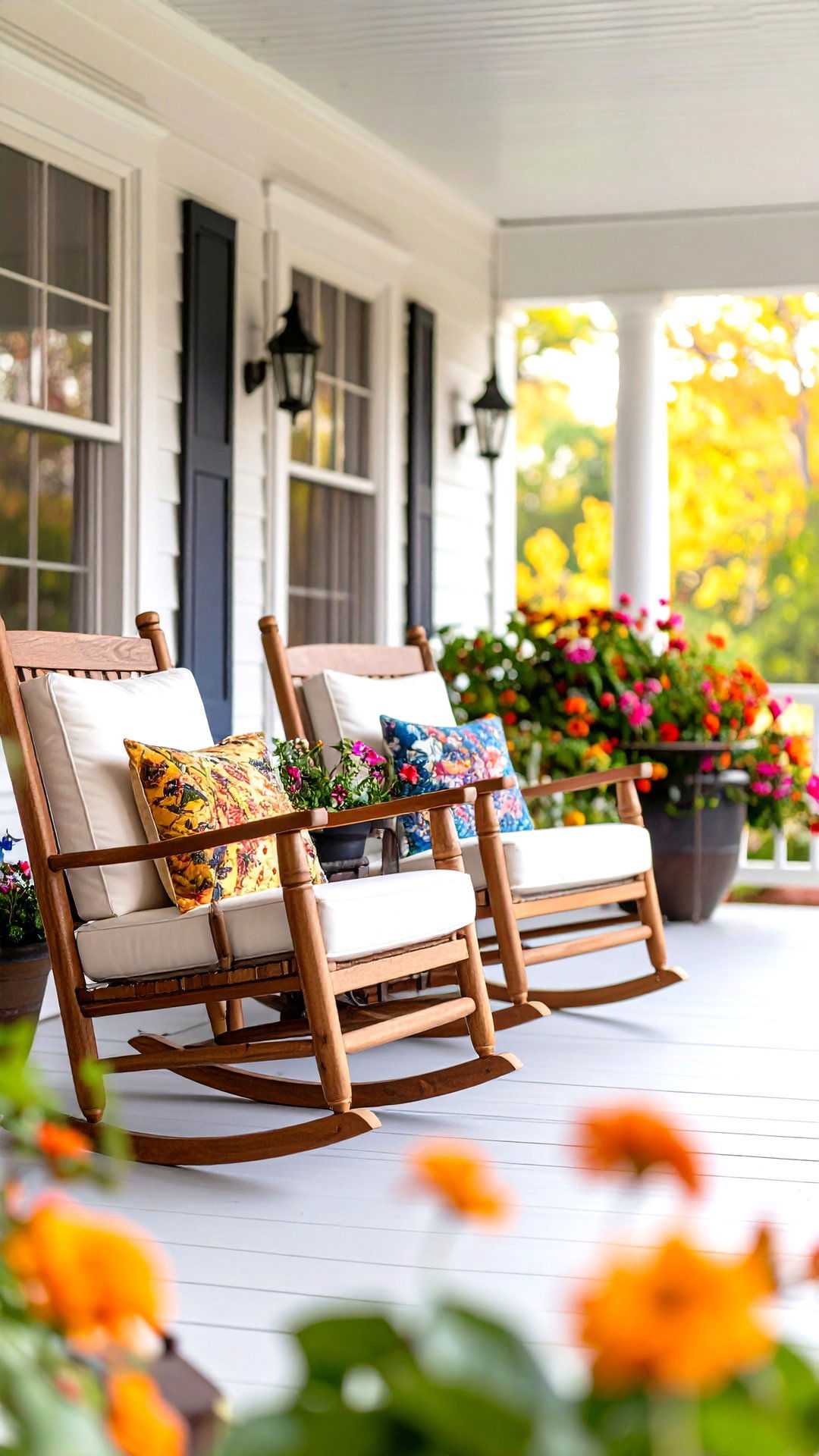
Placing identical rocking chairs, stools, or side tables in mirrored positions doubles seating and underscores the colonial love of paired elements. Outdoor furniture reviewers note that coordinated sets look intentional, even if you swap cushion fabrics with the seasons.
22. Painted Porch-Floor Stripes Hint at Coastal Colonial Roots
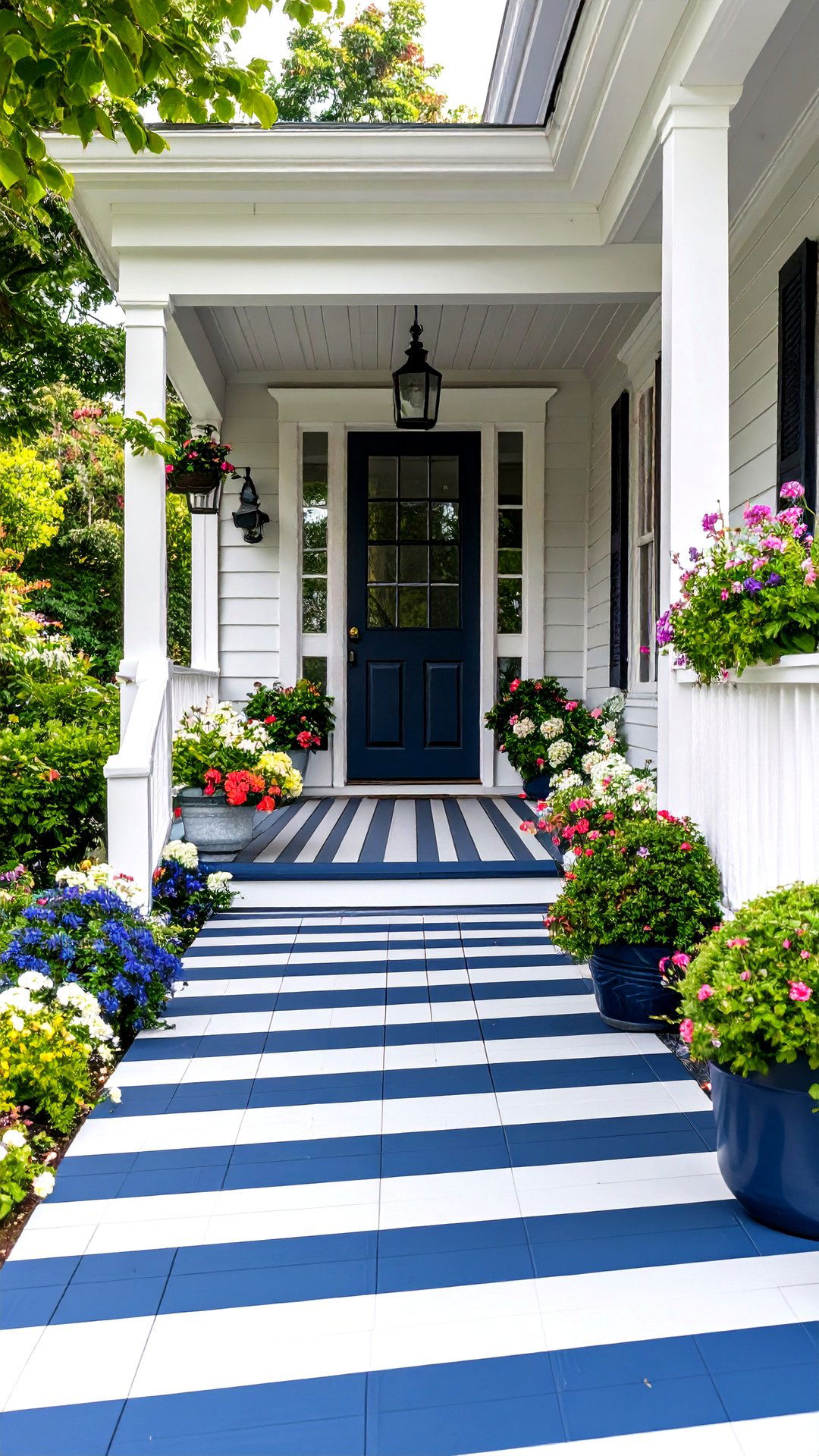
A series of crisp, contrasting floor stripes — think navy and pale gray — adds subtle pattern while disguising everyday scuffs. DIY step makeovers show how painter’s tape and porch-floor enamel can deliver a nautical nod in a single weekend.
23. Whisper-Quiet White Ceiling Fans Disappear Into the Background
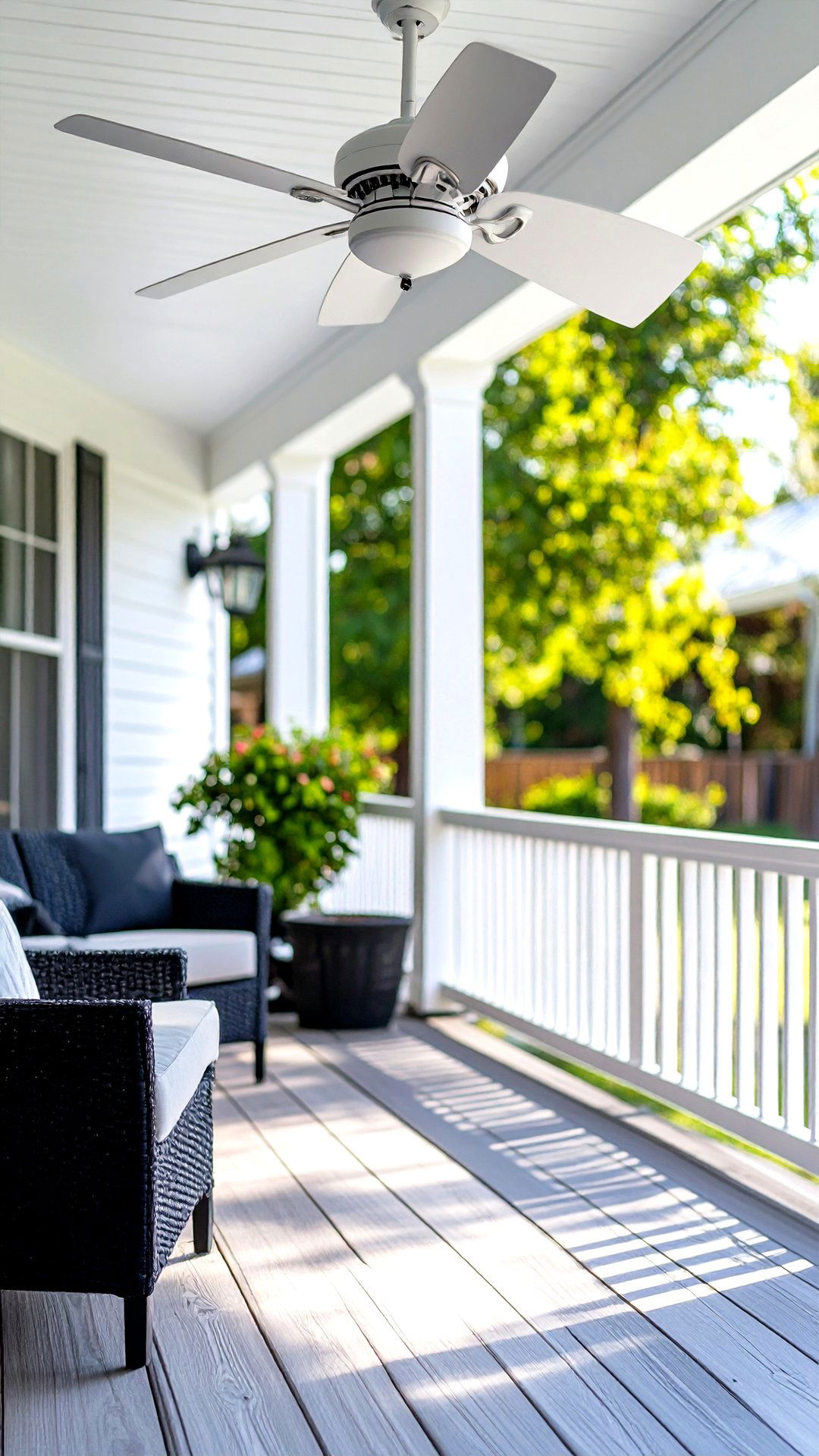
Swapping a dated bronze fan for a damp-rated, energy-efficient white model keeps air moving without breaking the porch’s color harmony. Product testers praise modern outdoor fans for smart-home integration, low noise, and finishes that fade into beadboard ceilings.
24. Numbered Steps Turn Safety Into Style
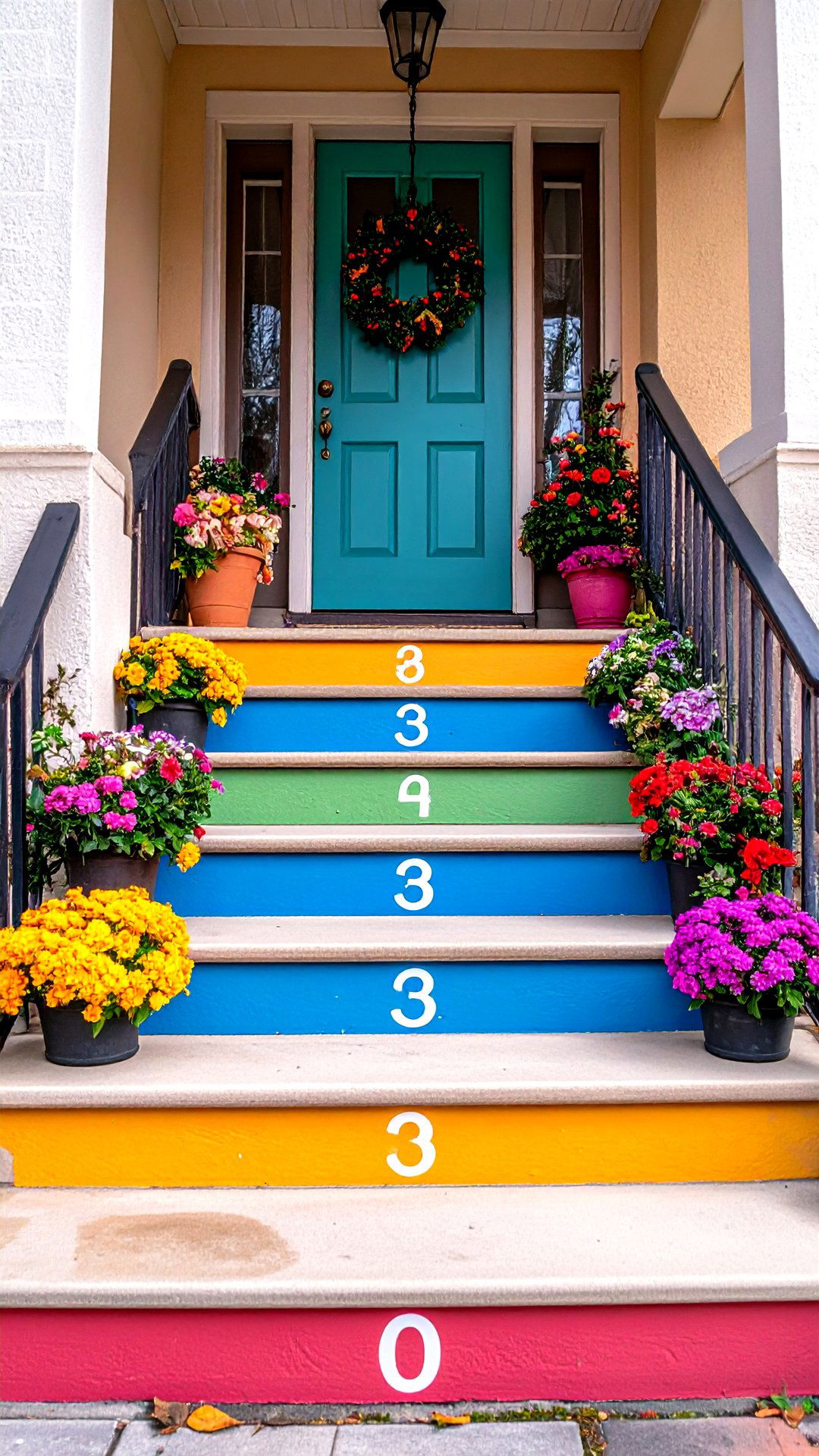
Stenciling address numbers or a playful countdown onto the risers personalizes the climb and helps visitors spot the right house after dusk — especially handy when delivery drivers roam the block. Step-design round-ups show countless stencil fonts and paint combos to fit any palette.
25. Period-Reproduction Hardware Completes the Picture
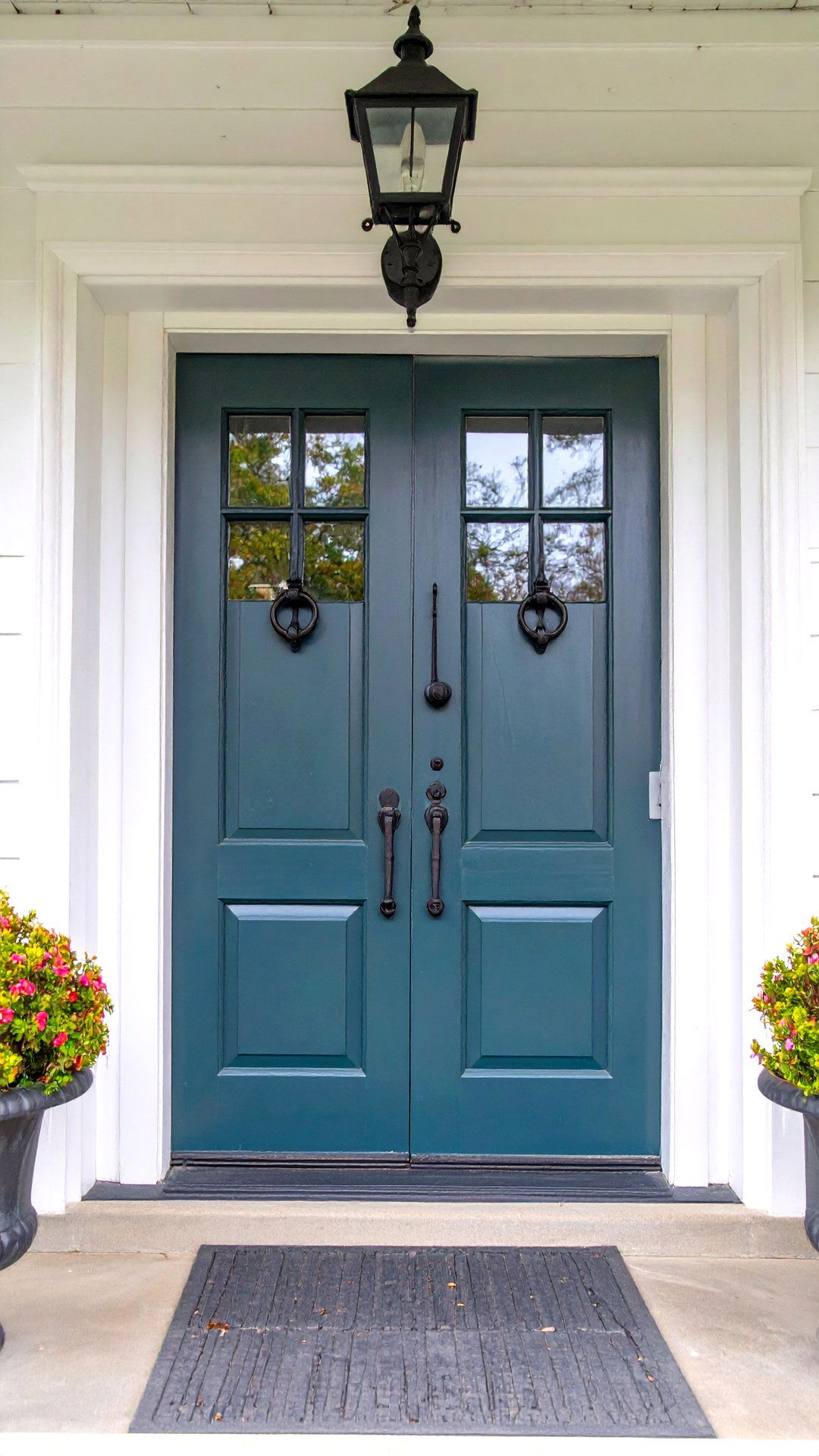
Swap out modern shiny knobs for iron strap hinges, tall escutcheons, or thumb-latch handles that suit a colonial entry door. Hardware guides emphasize that bold, visible metalwork acts like jewelry, turning an ordinary slab into a statement piece that feels authentic to the era.
Conclusion:
Blending symmetry, natural materials, and a few well-chosen modern comforts lets a colonial front porch tell two stories at once: the enduring appeal of early American design and the homeowner’s own taste for gracious outdoor living. Whether you start with a simple lantern swap or commit to copper gutters and fresh paint, each upgrade layers curb appeal that endures as reliably as brick underfoot and a rocker in the shade.


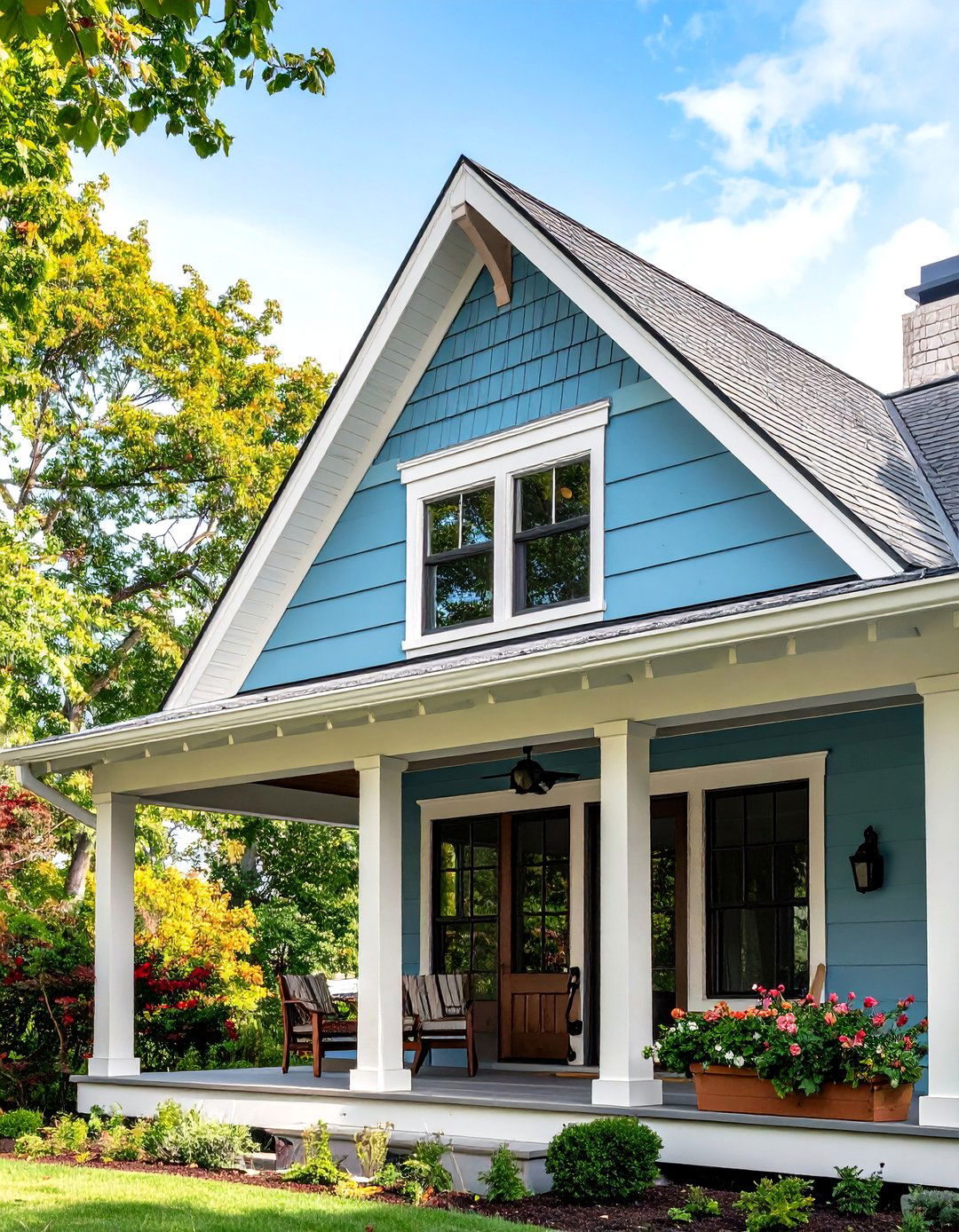
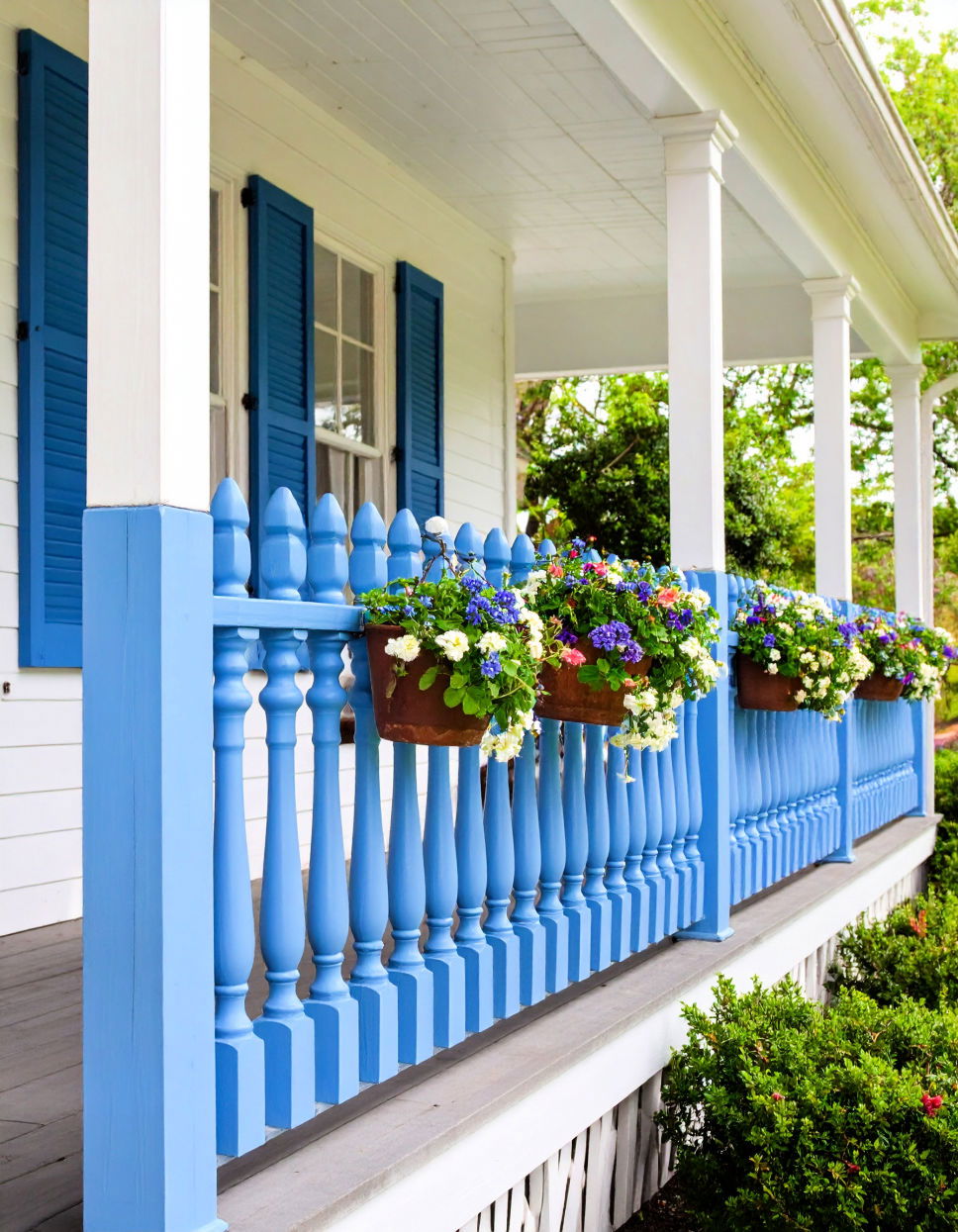
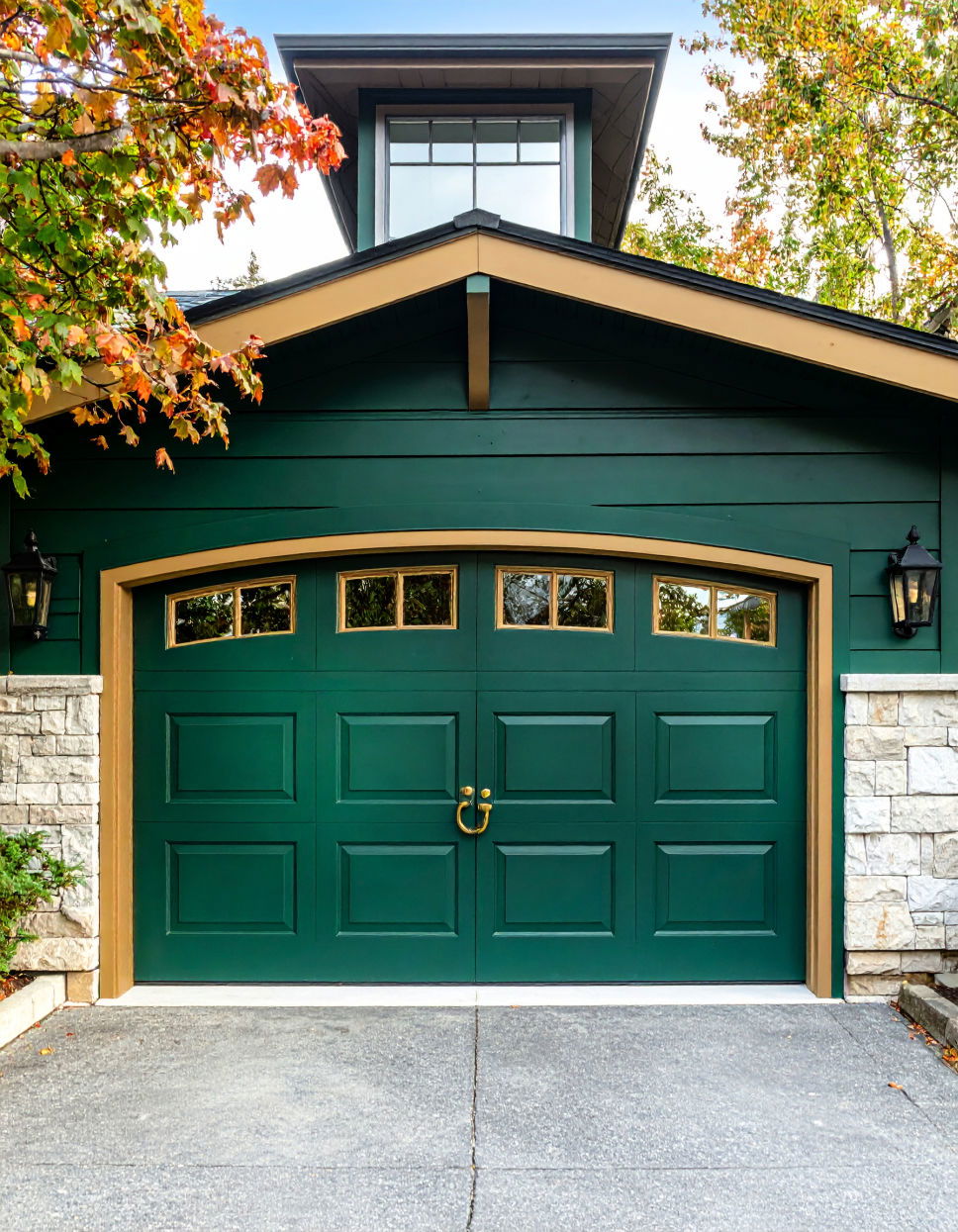
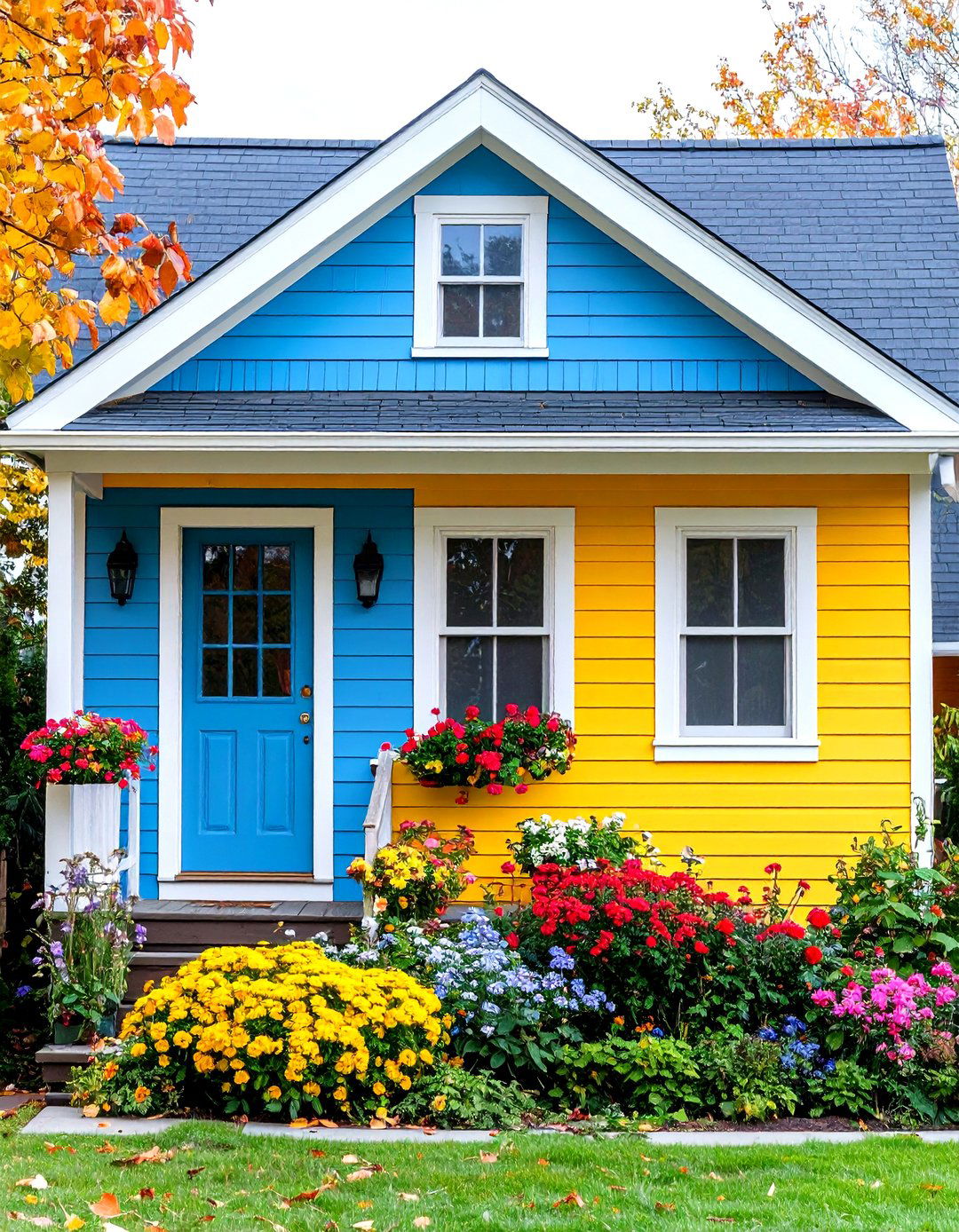
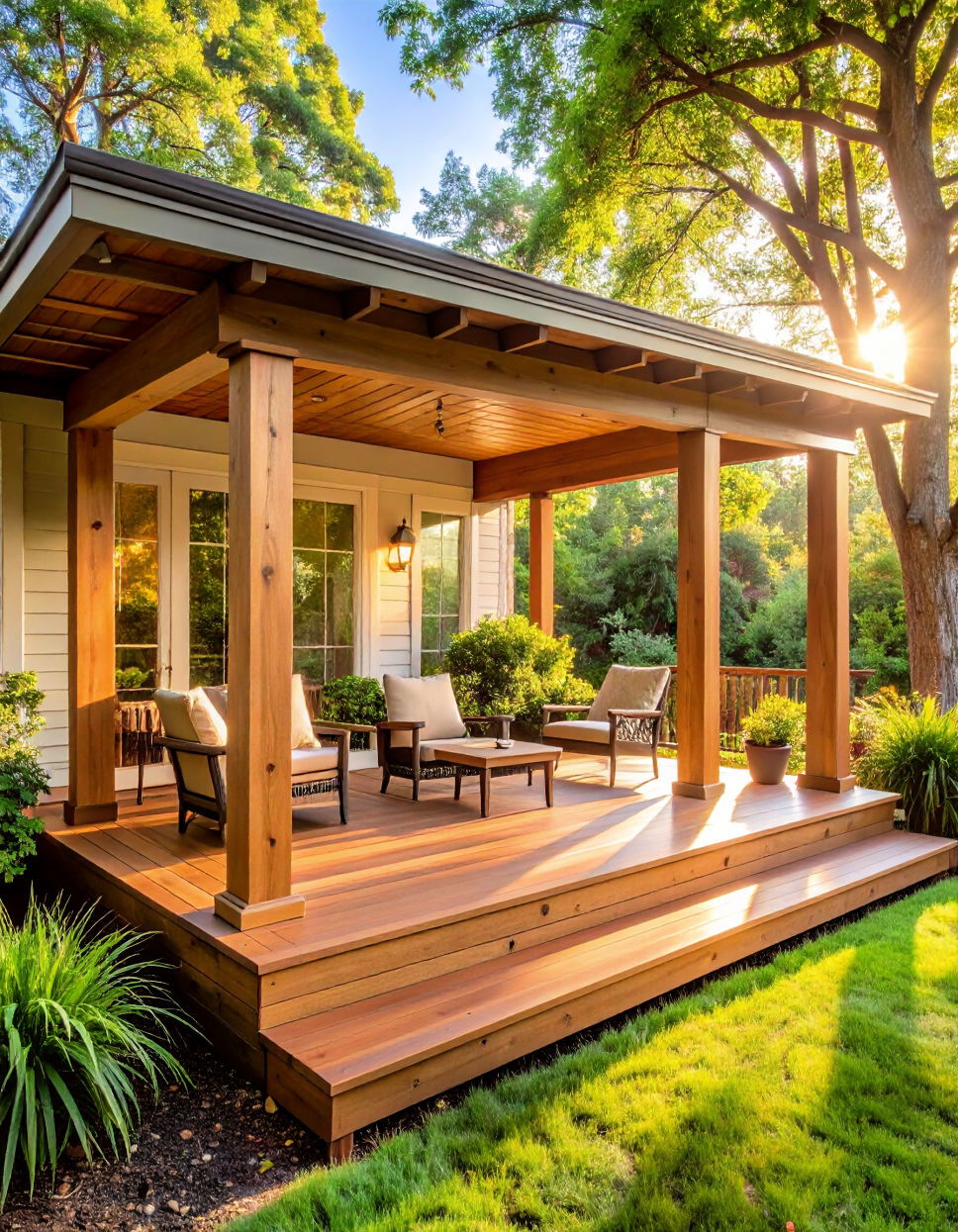




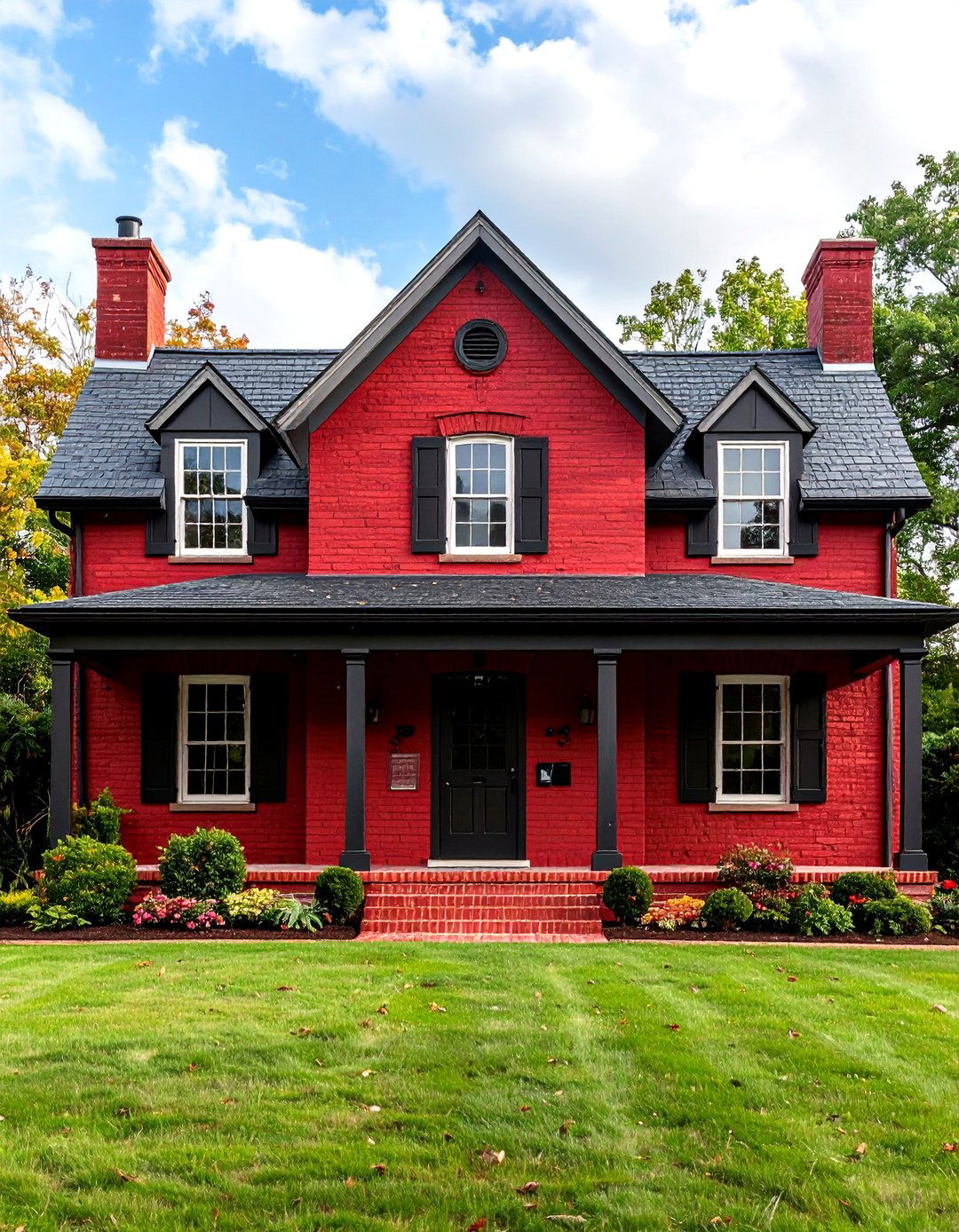
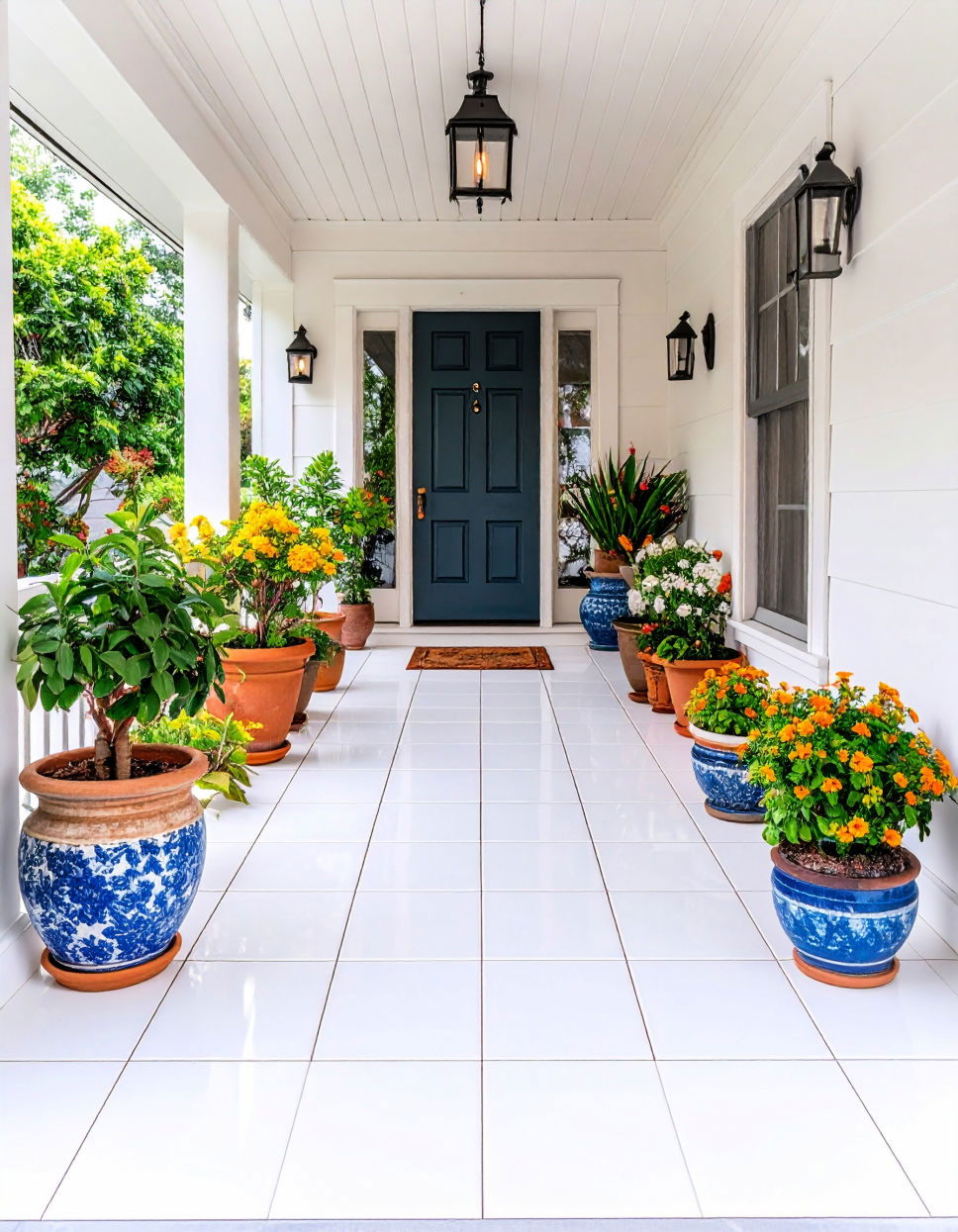
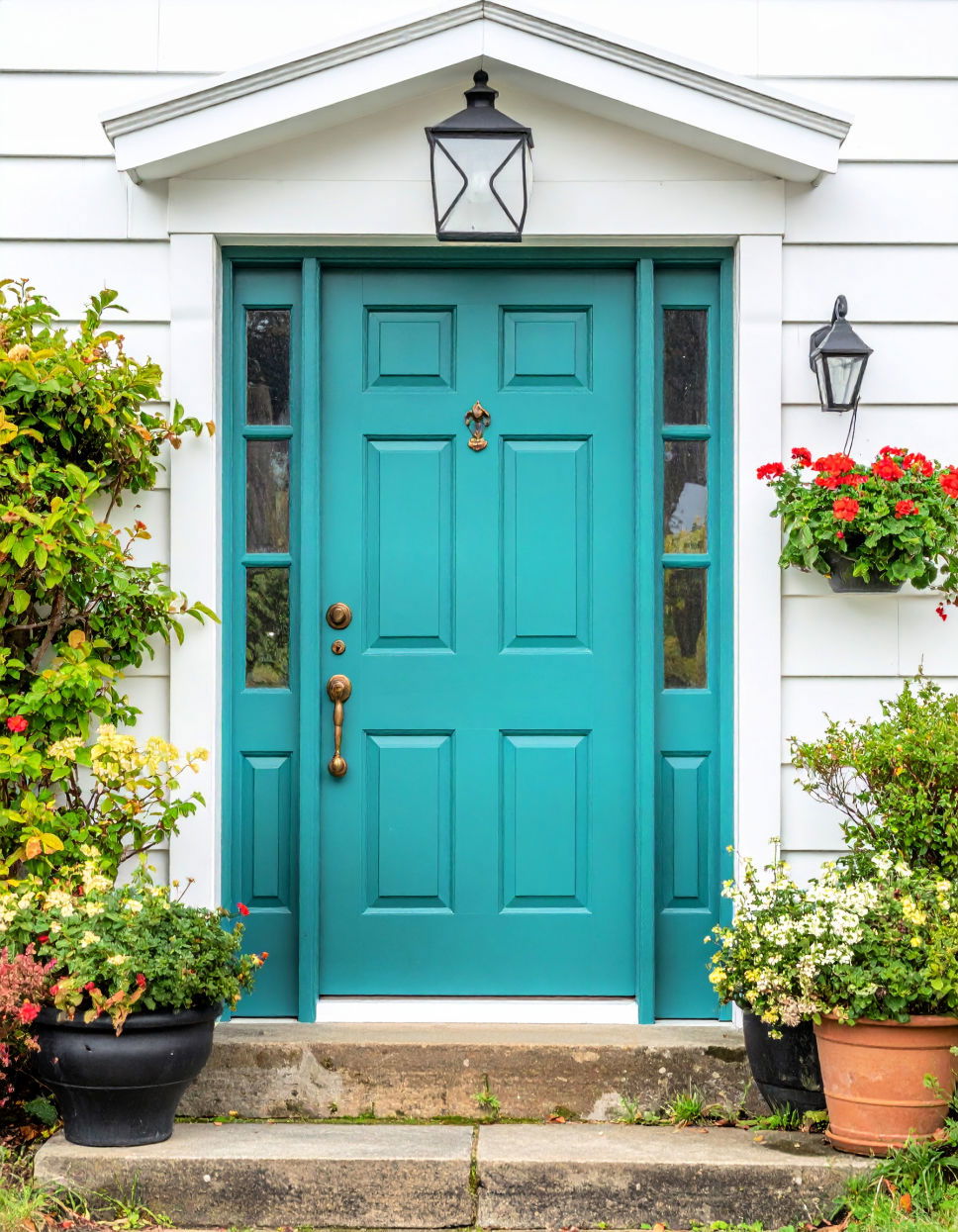
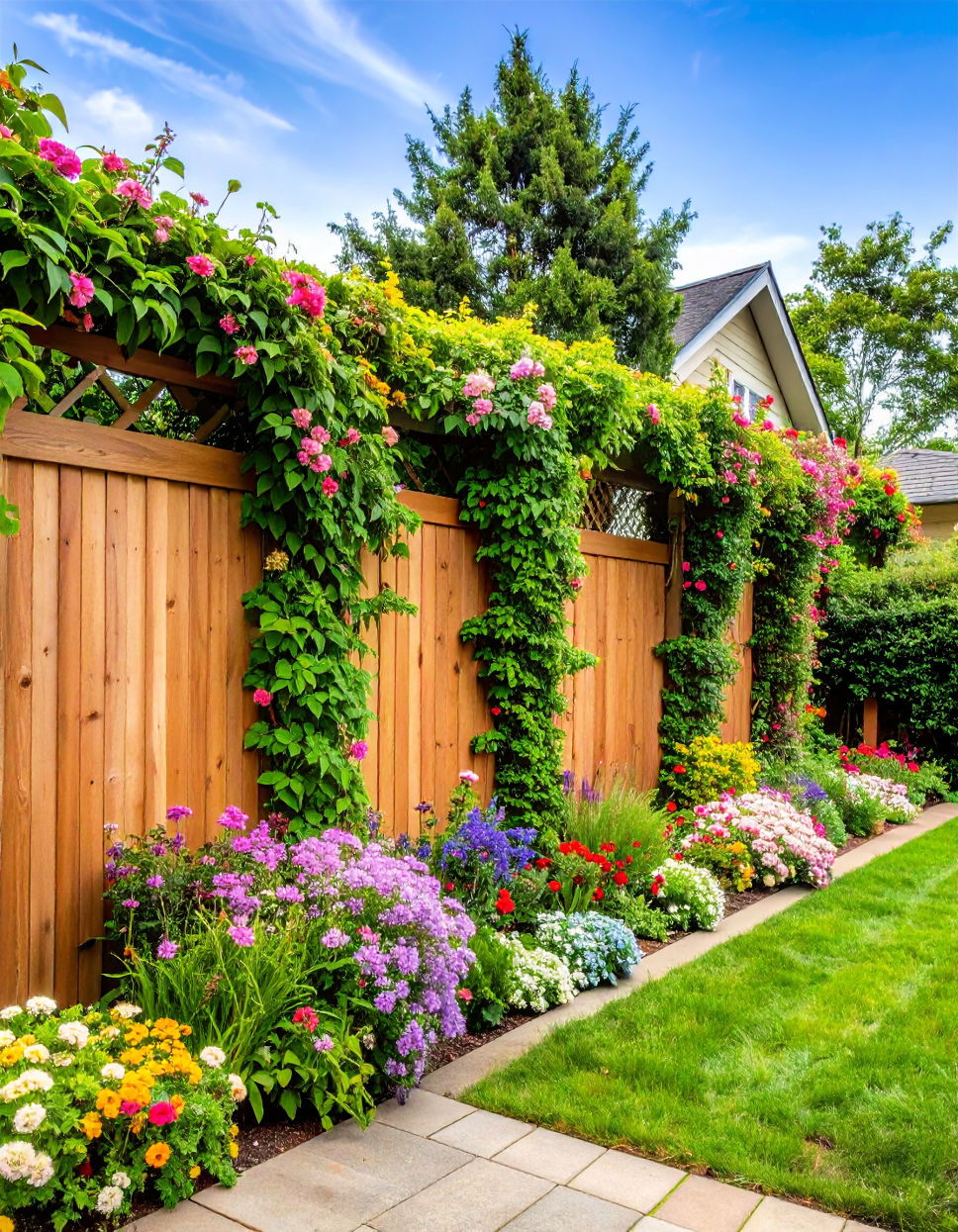
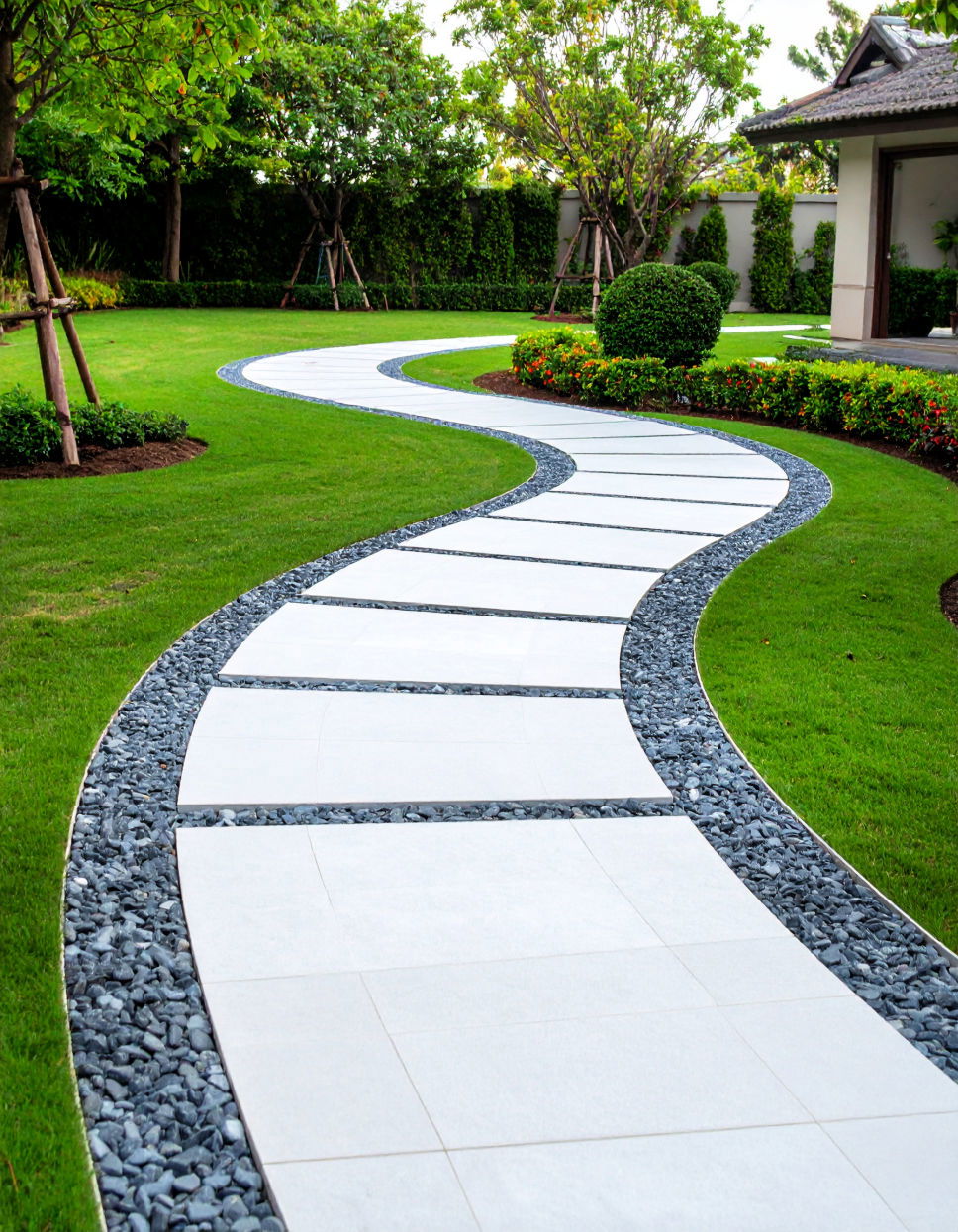
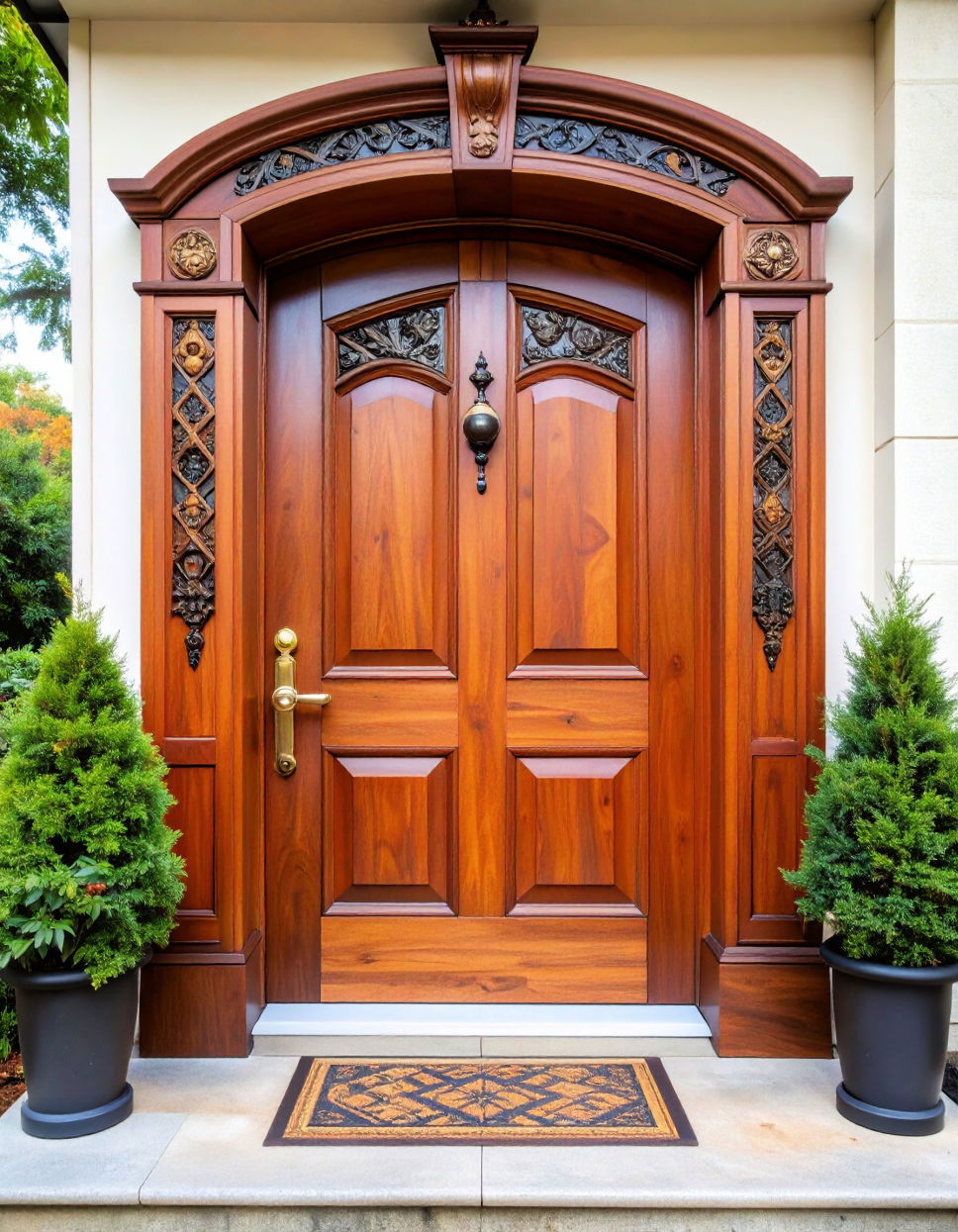
Leave a Reply